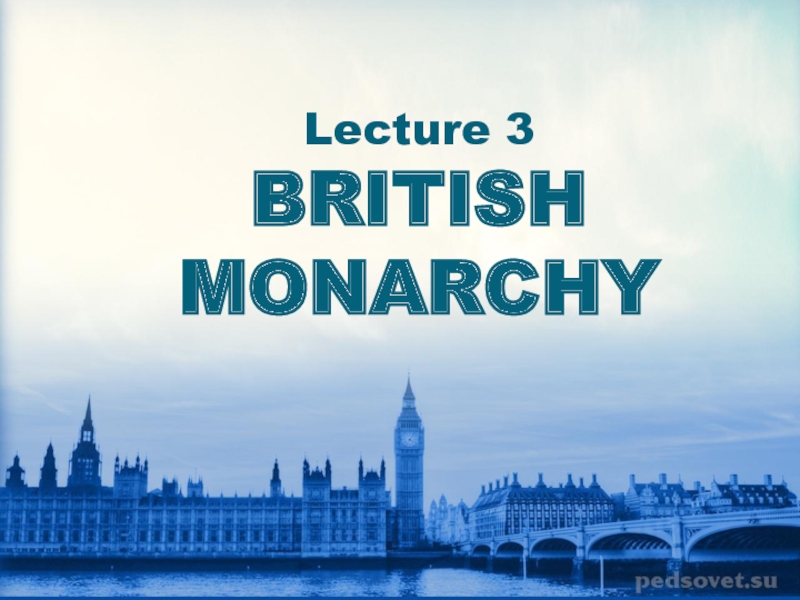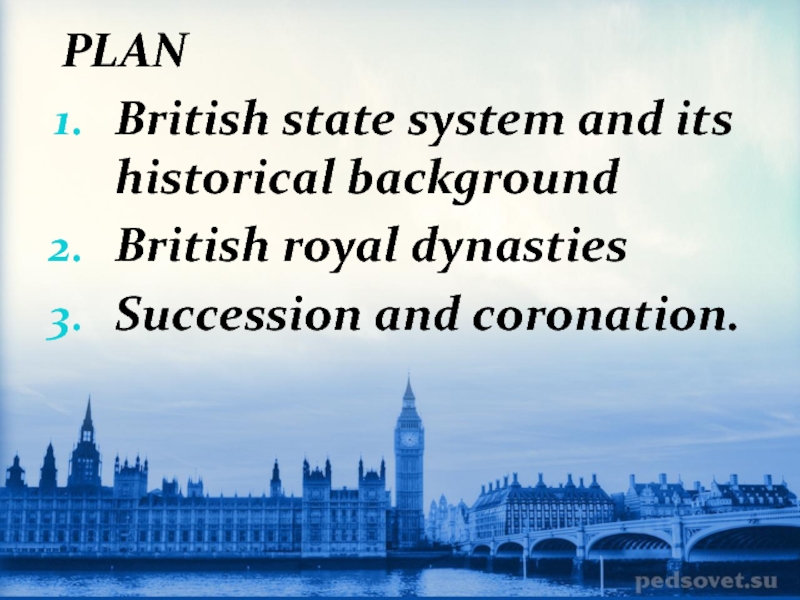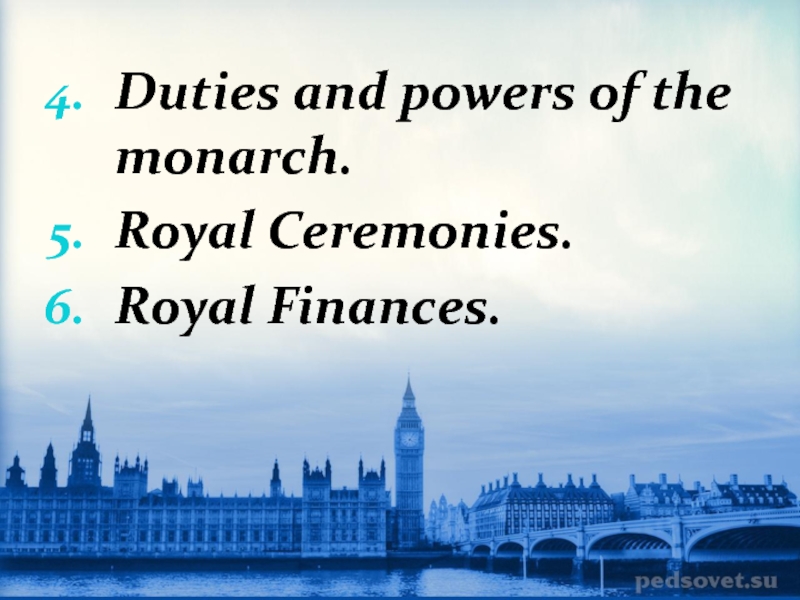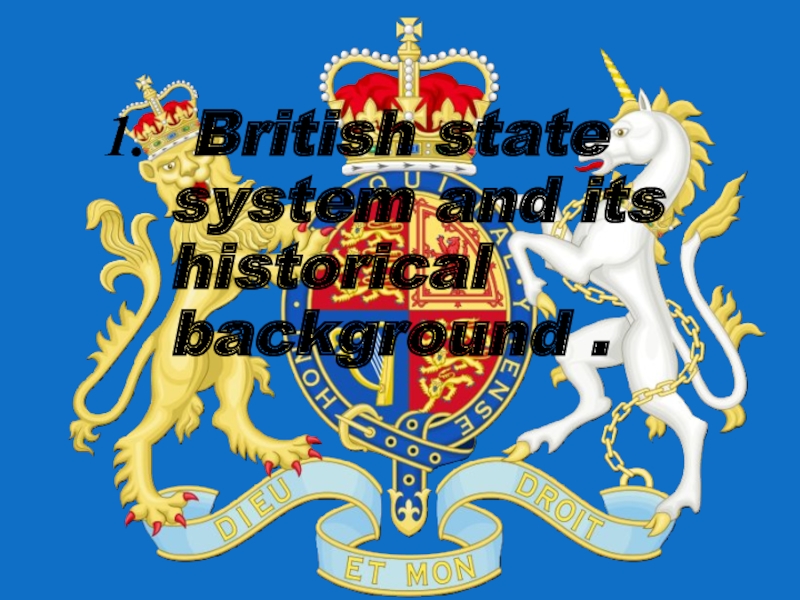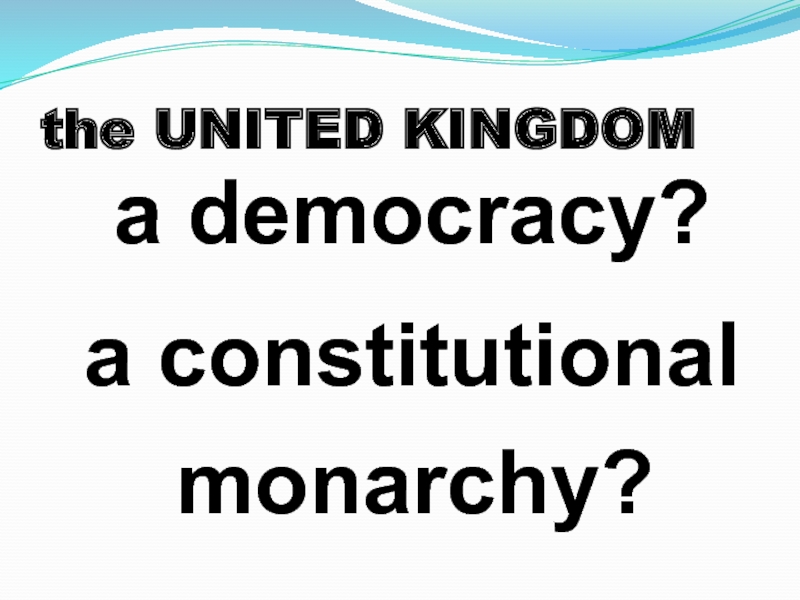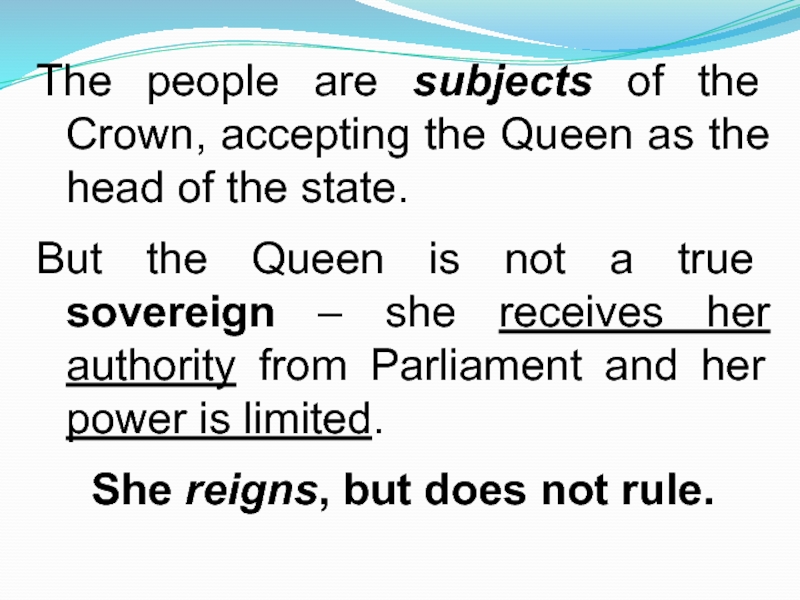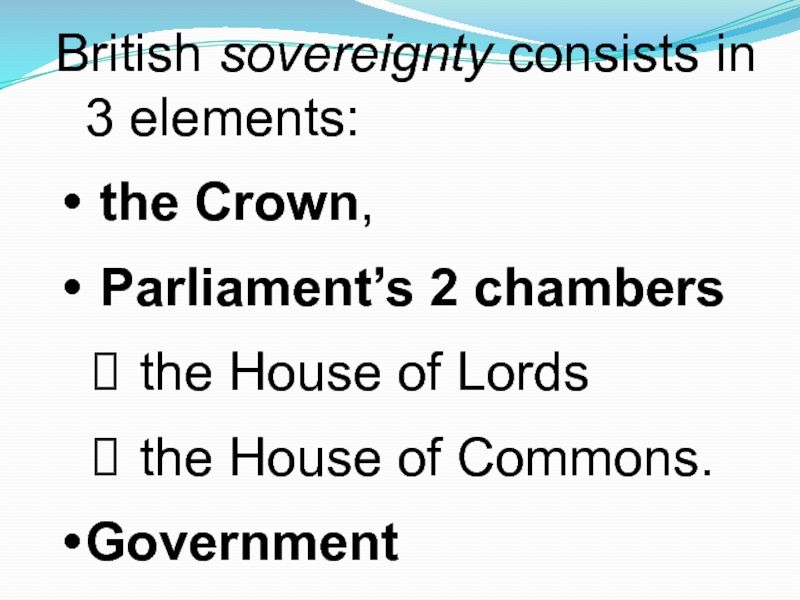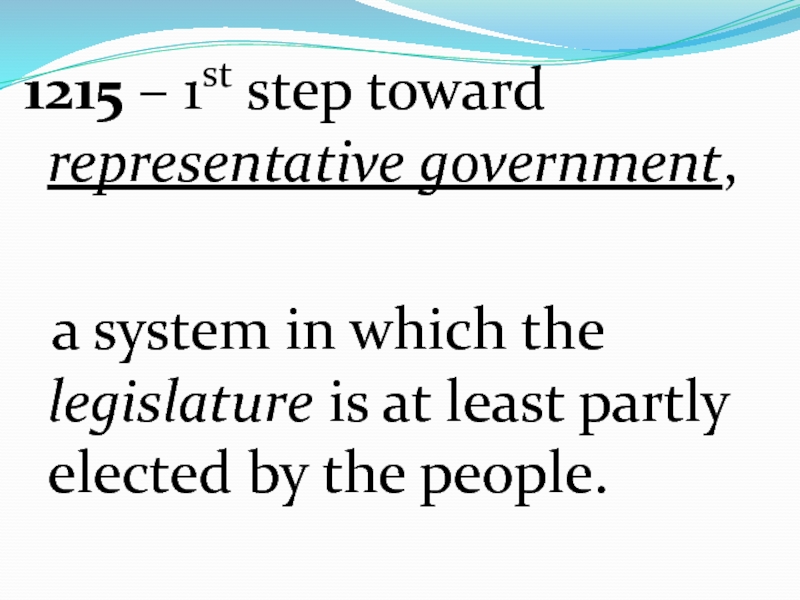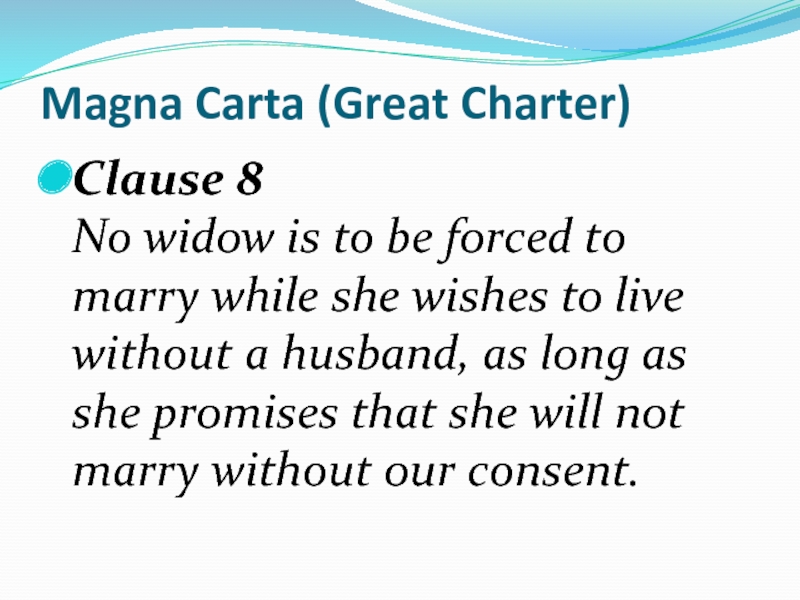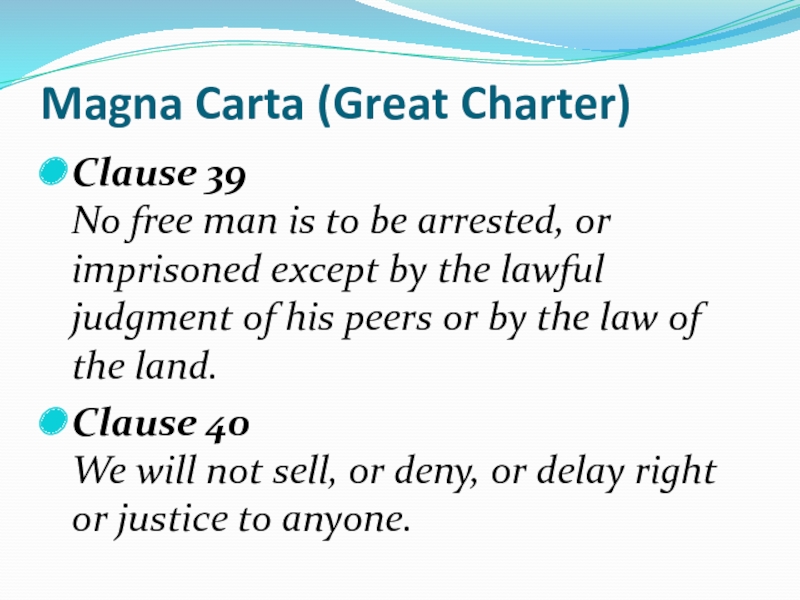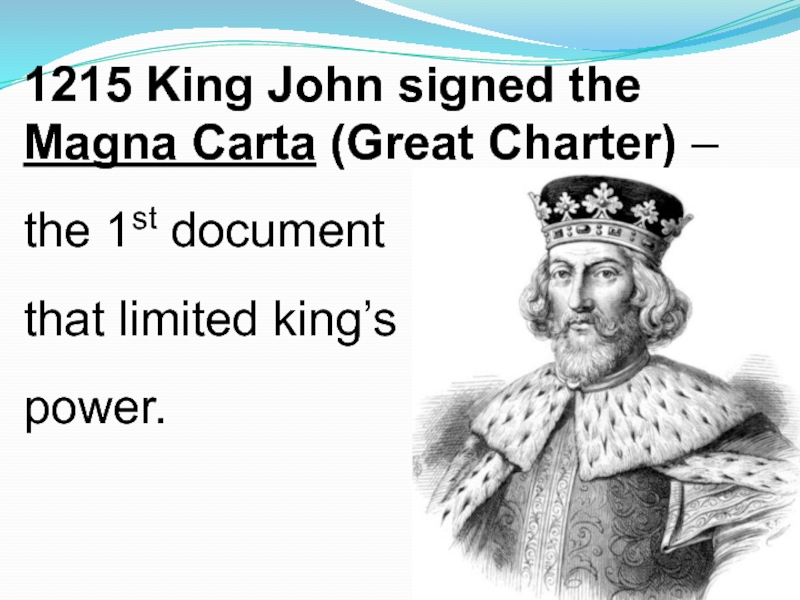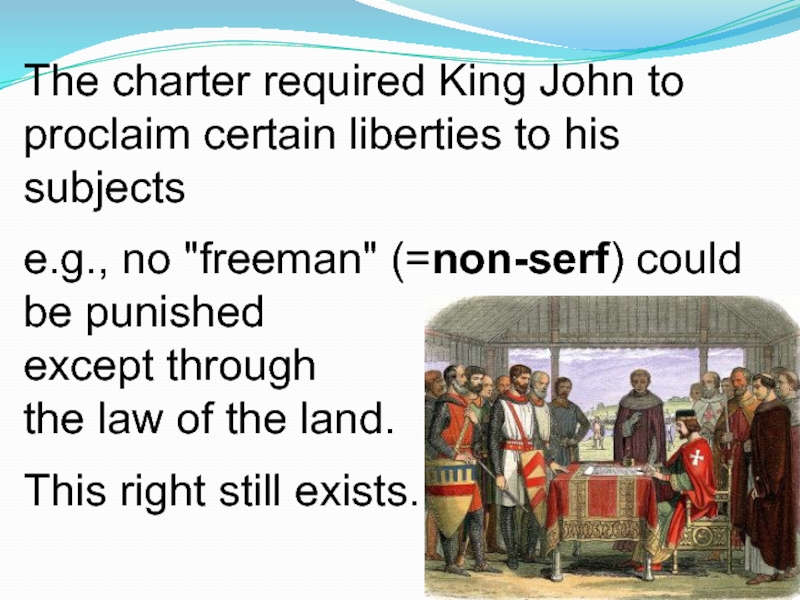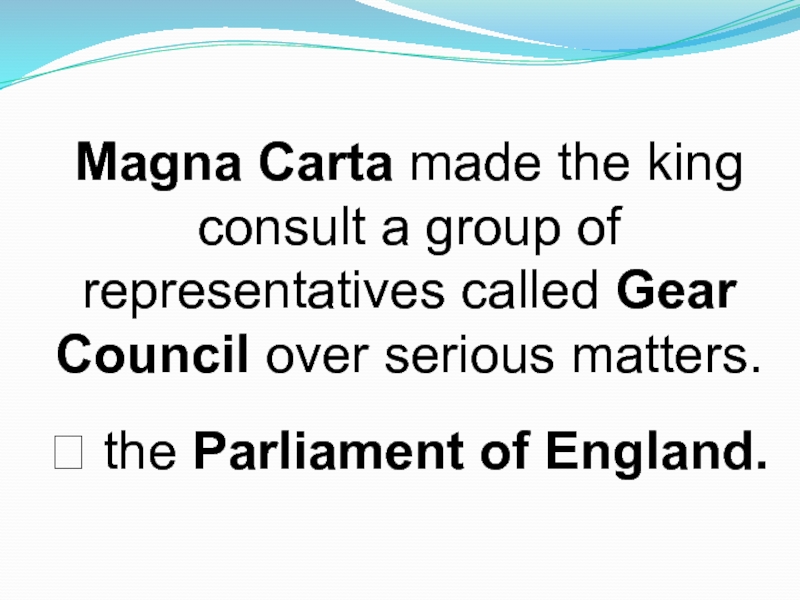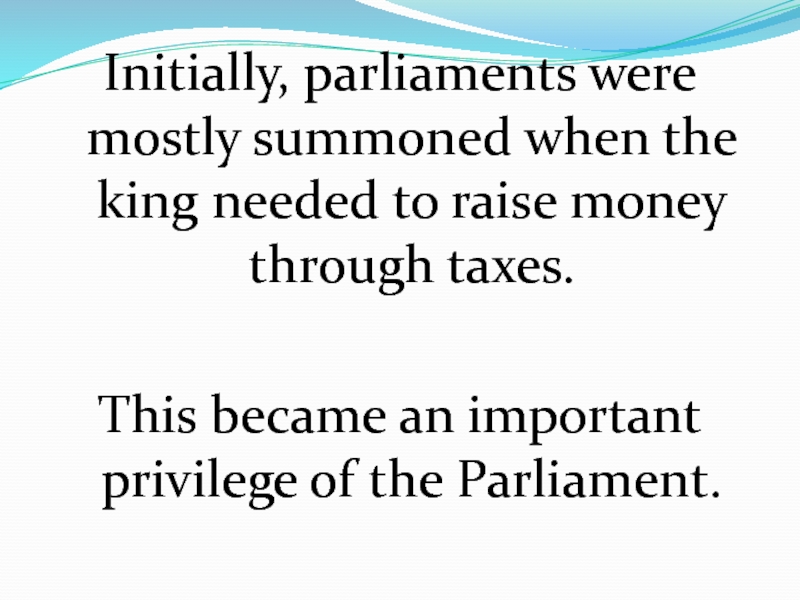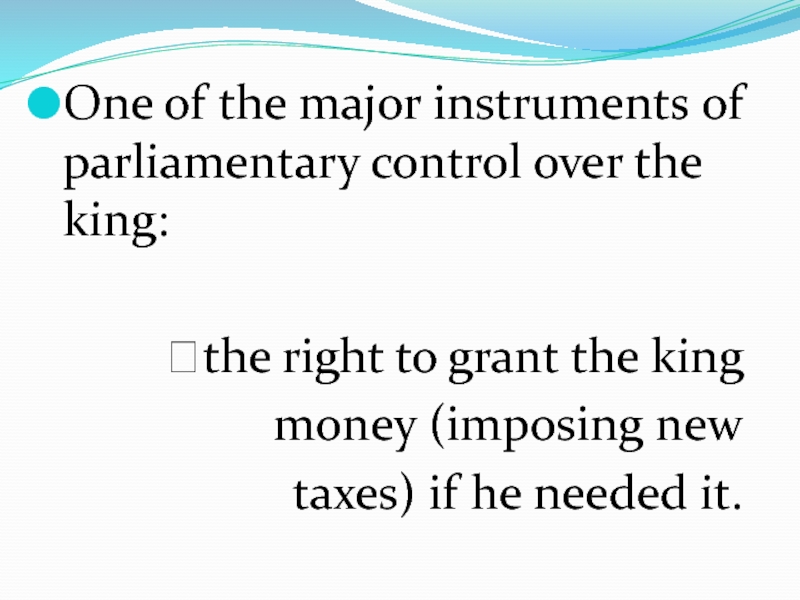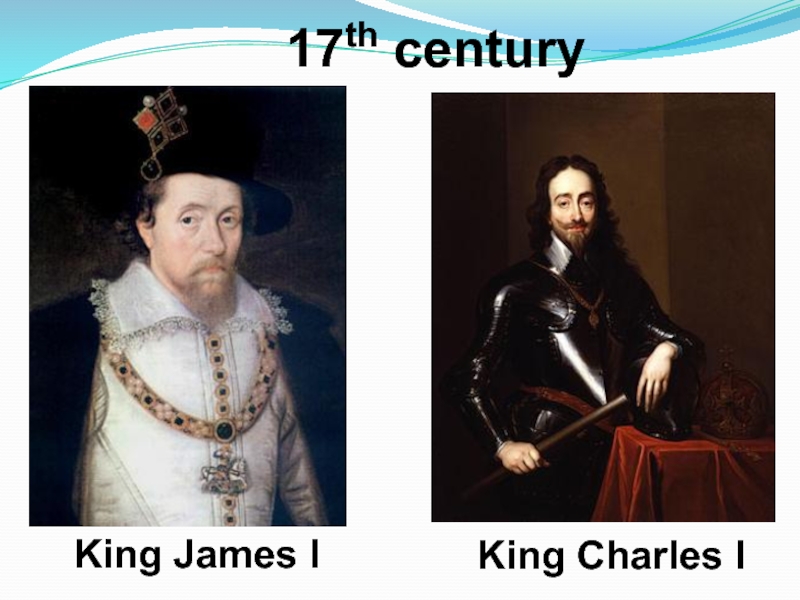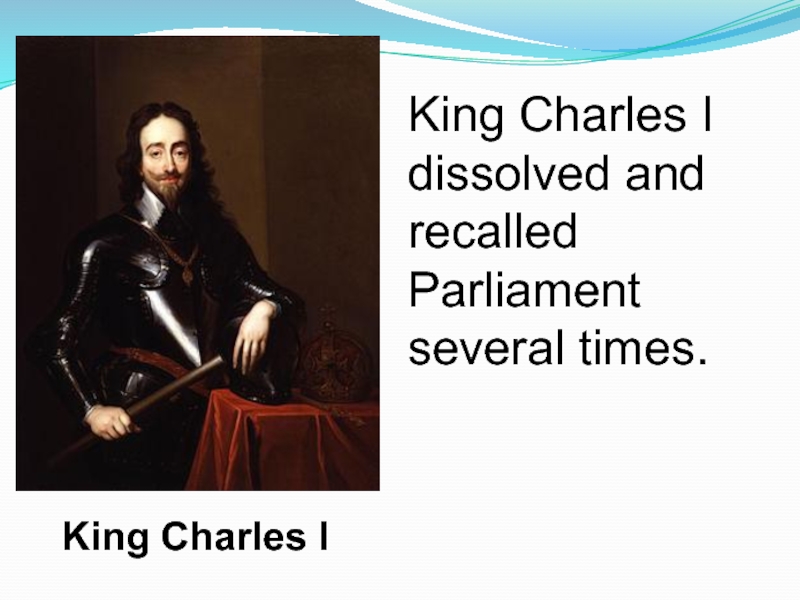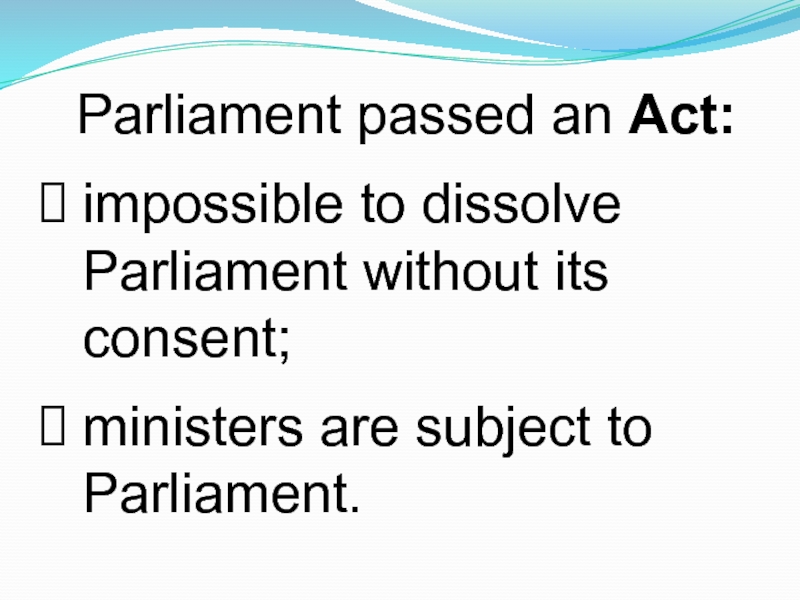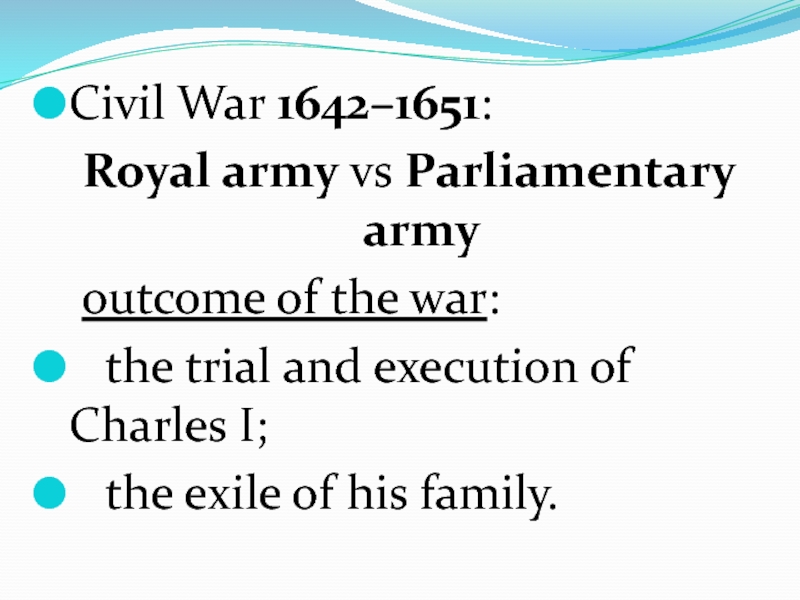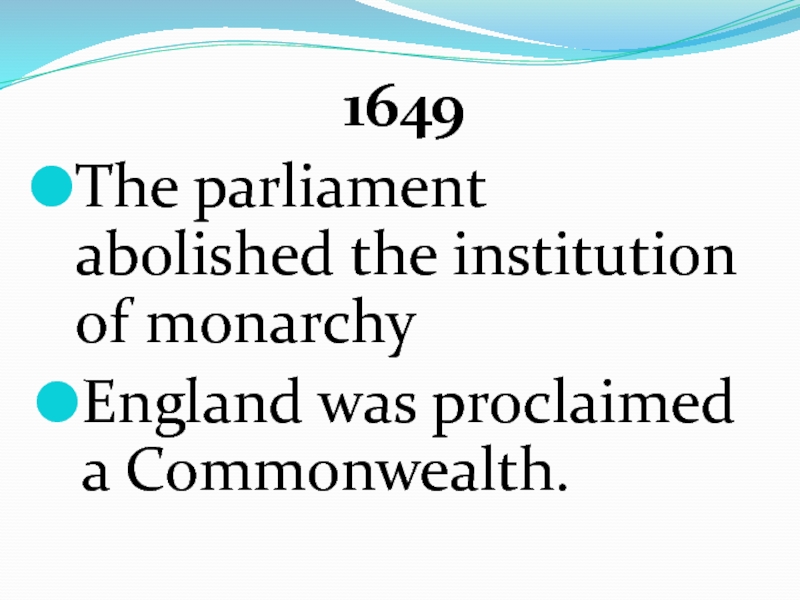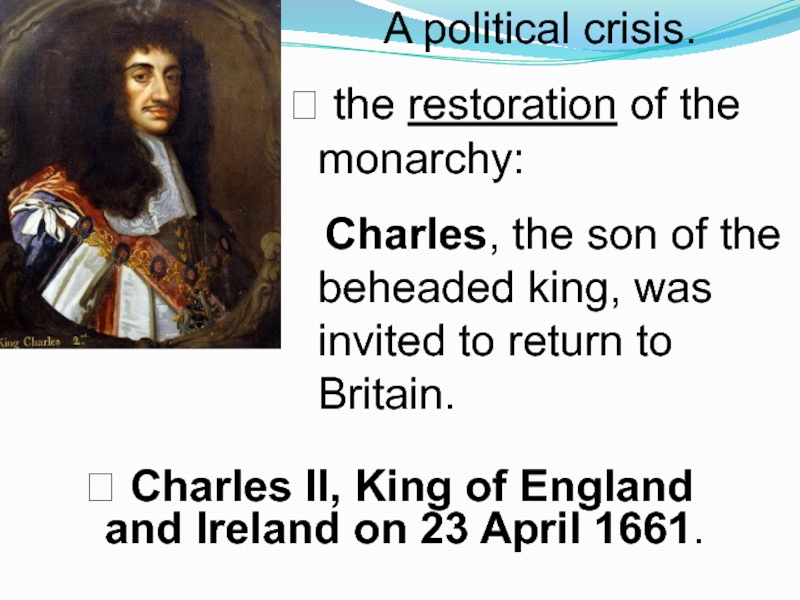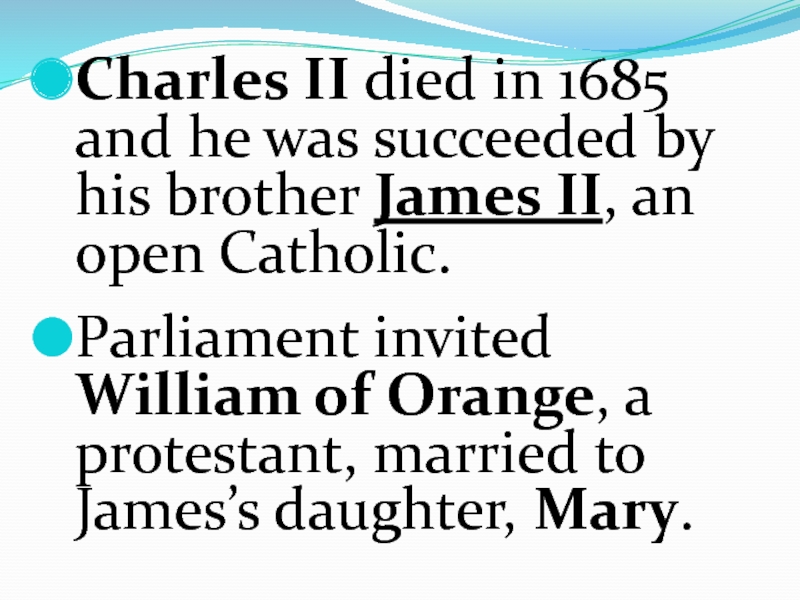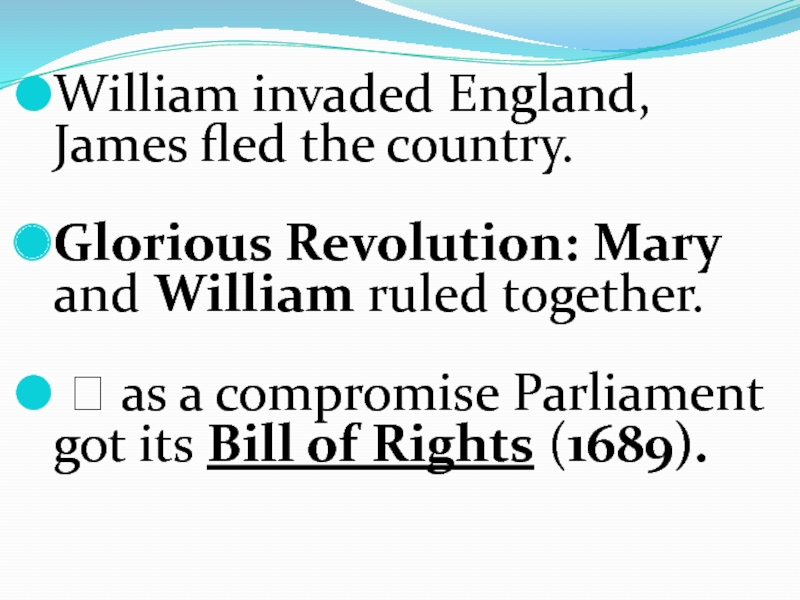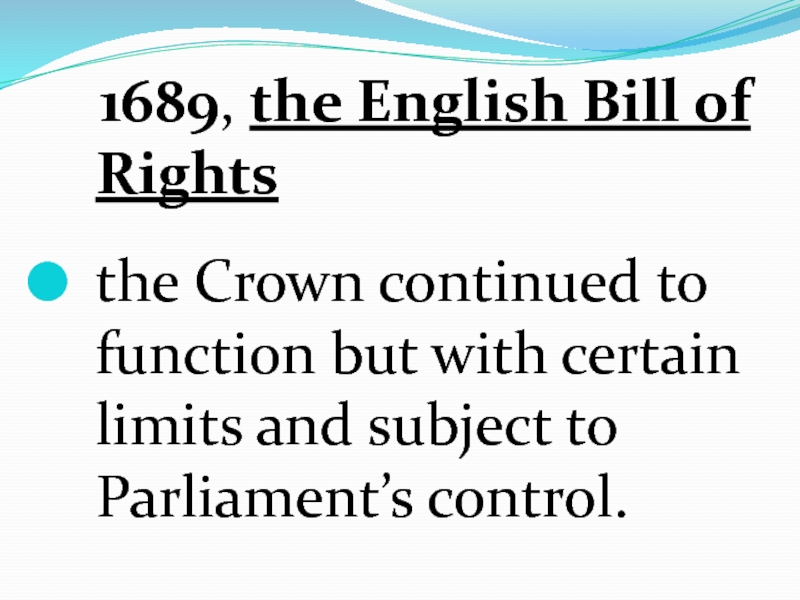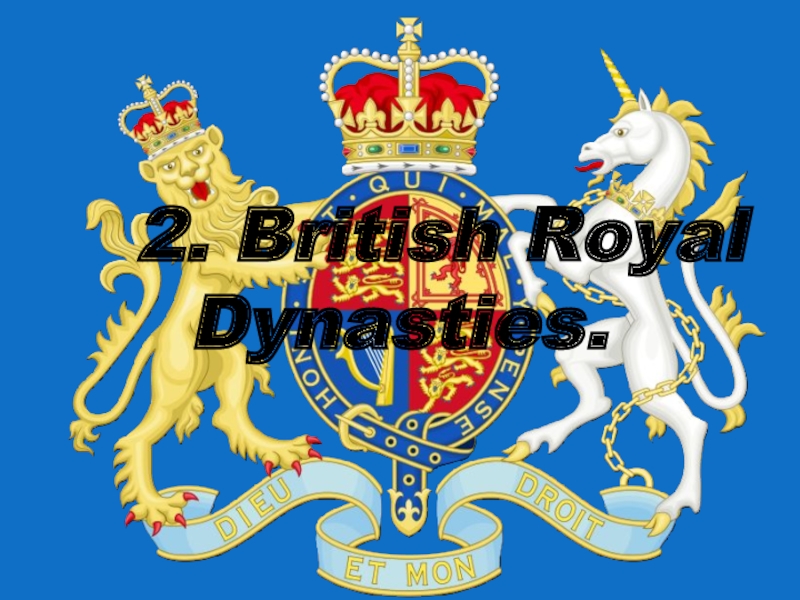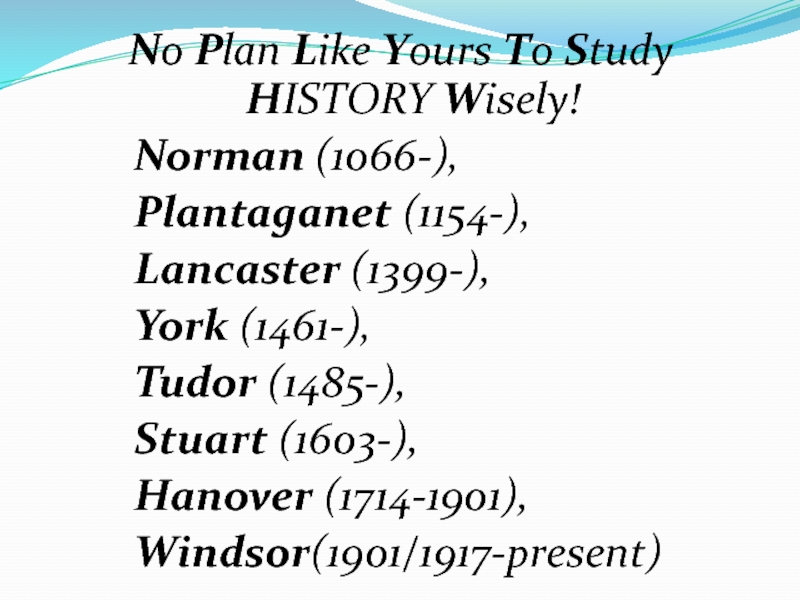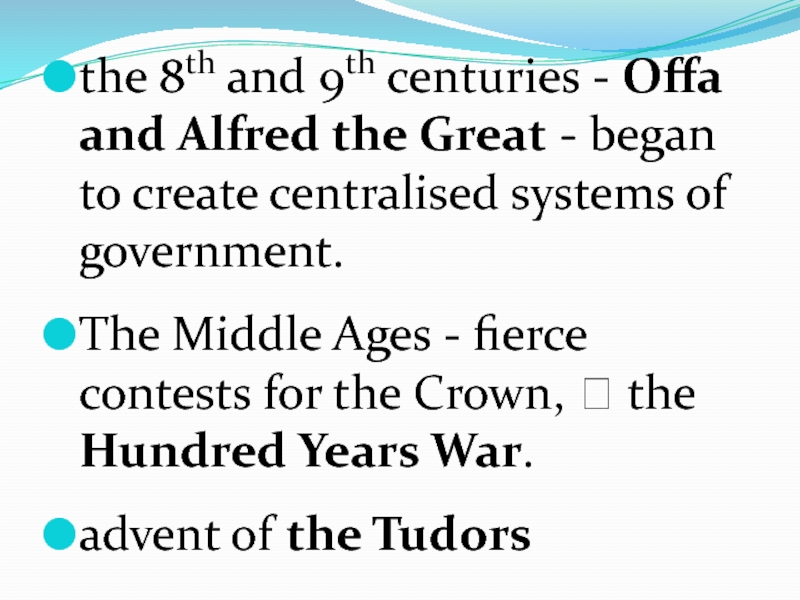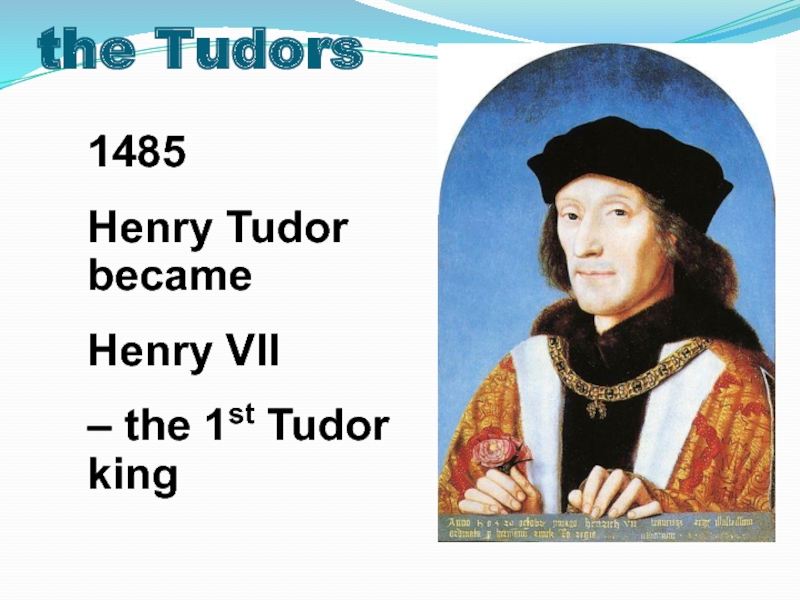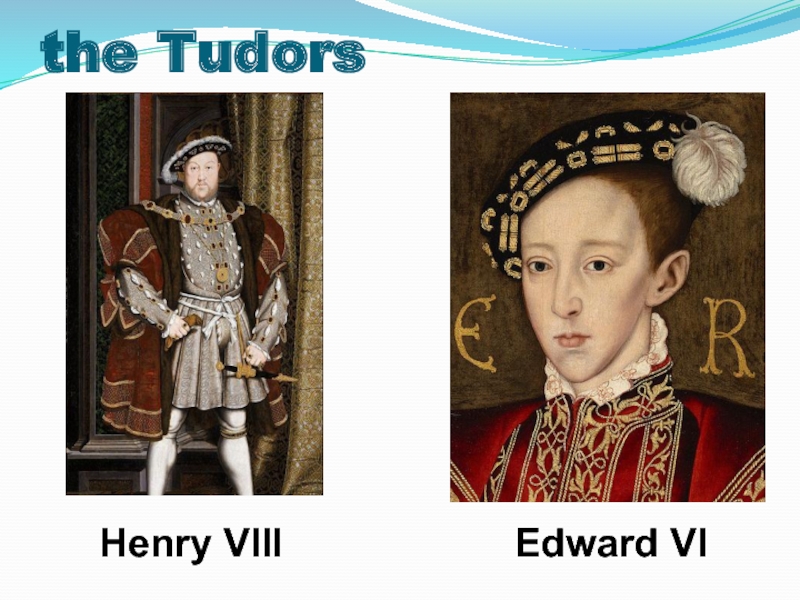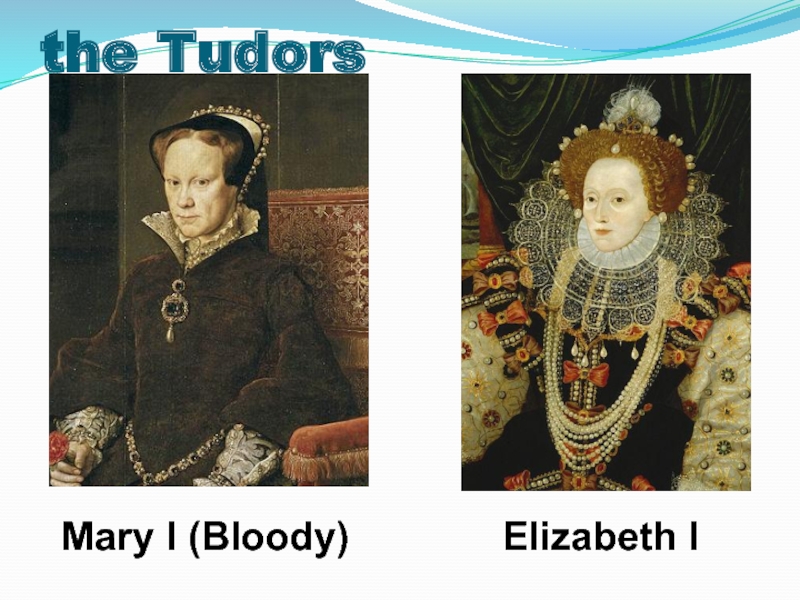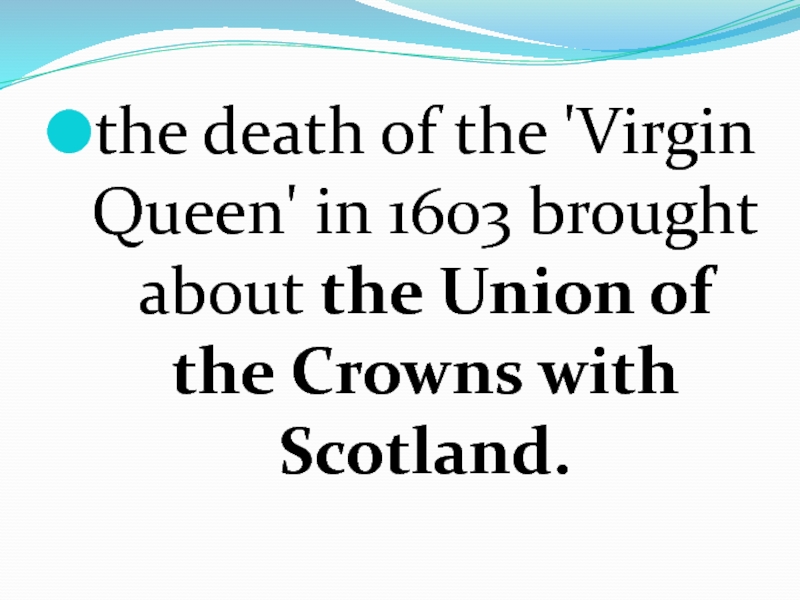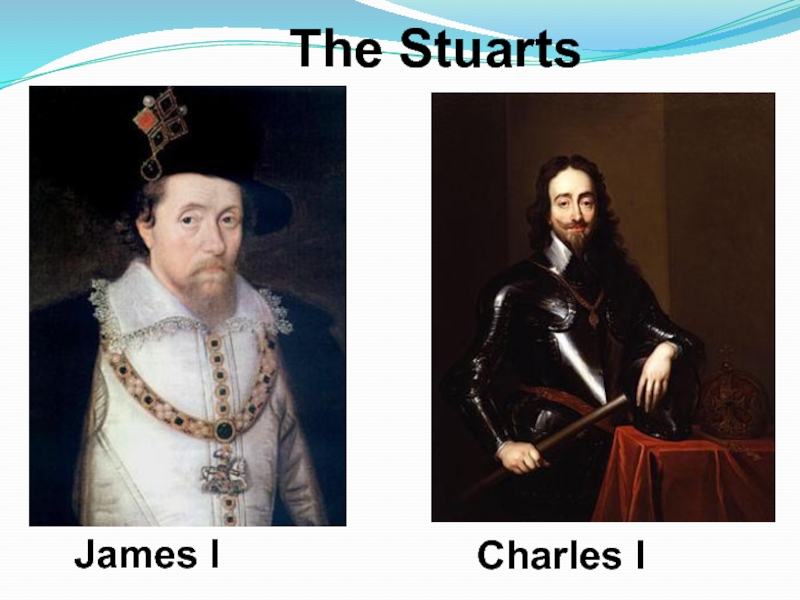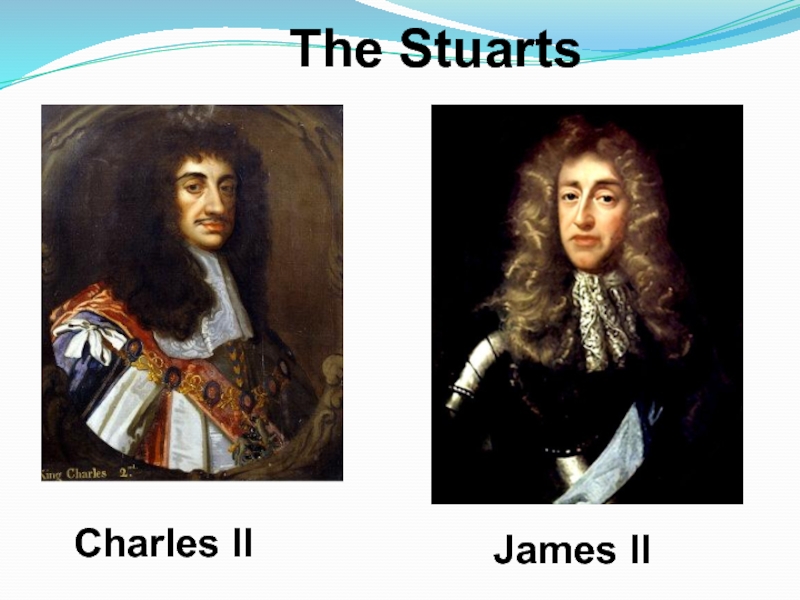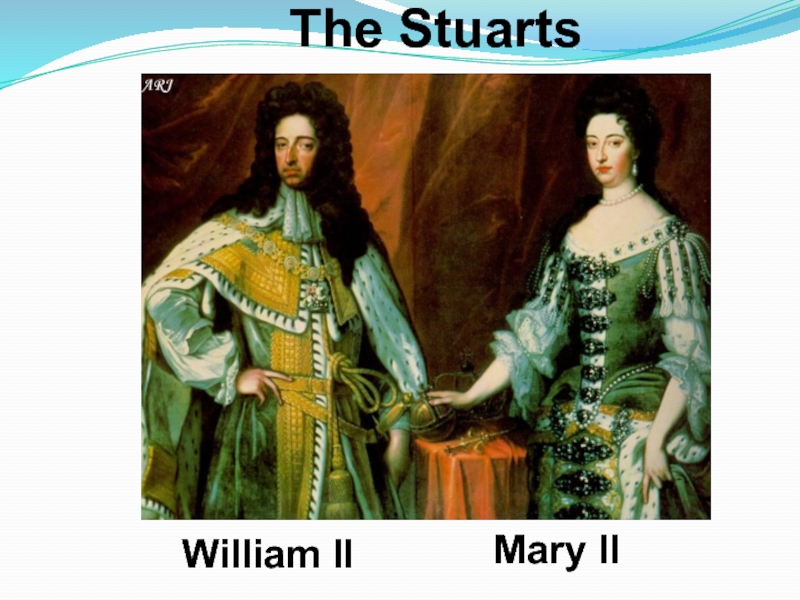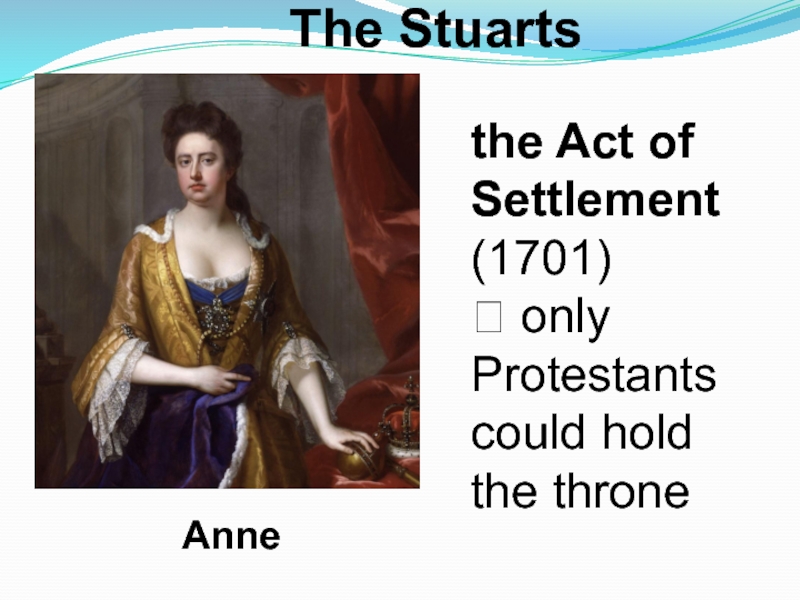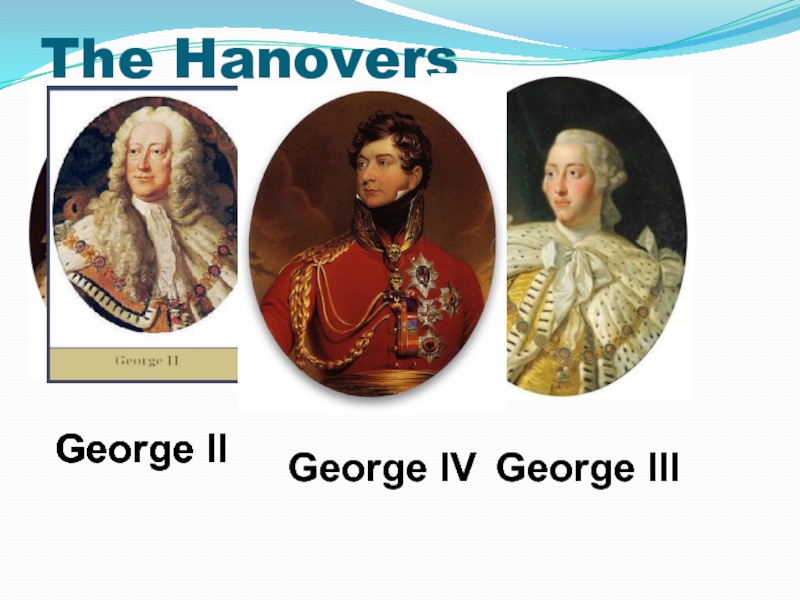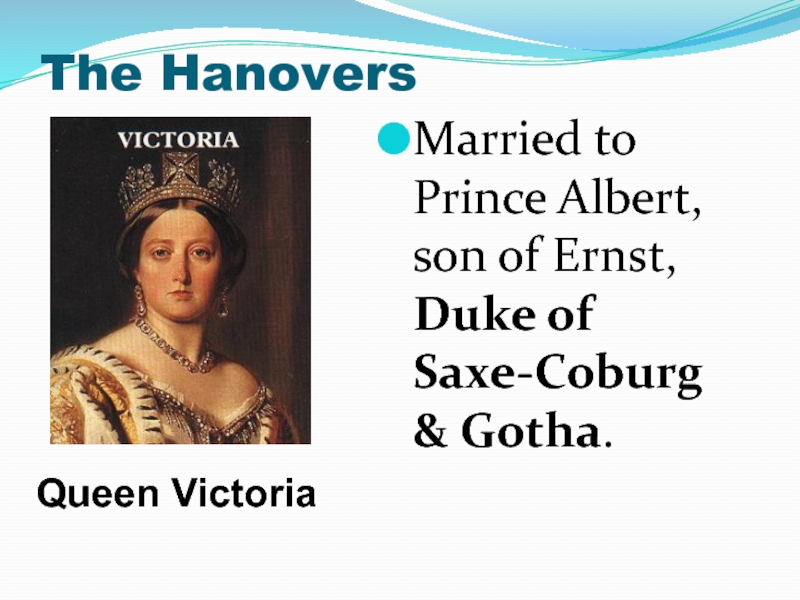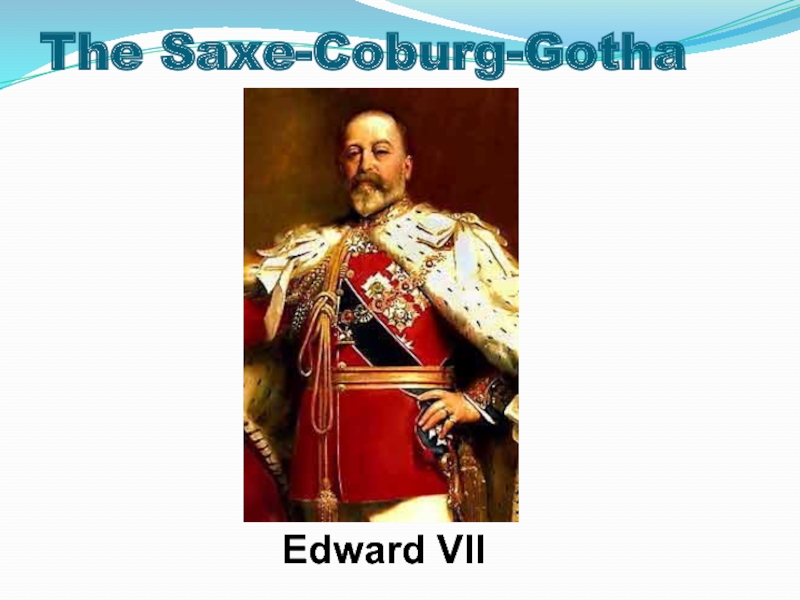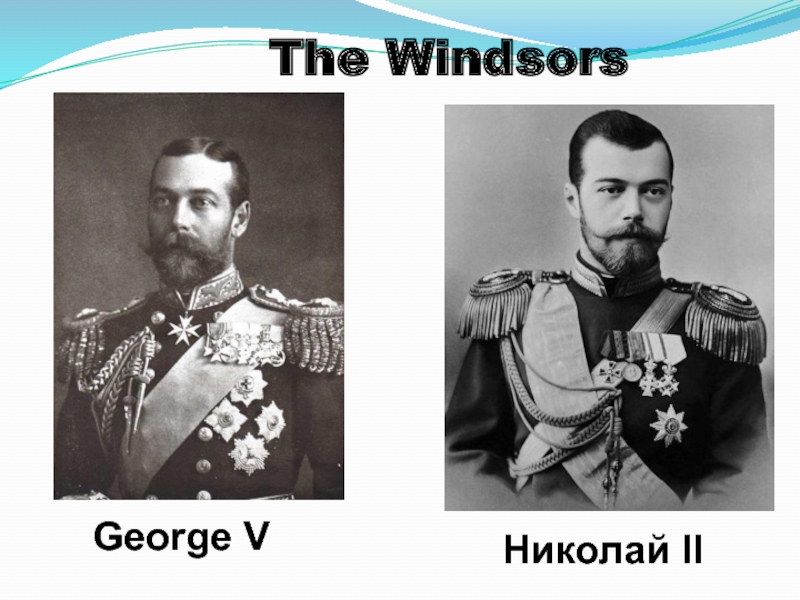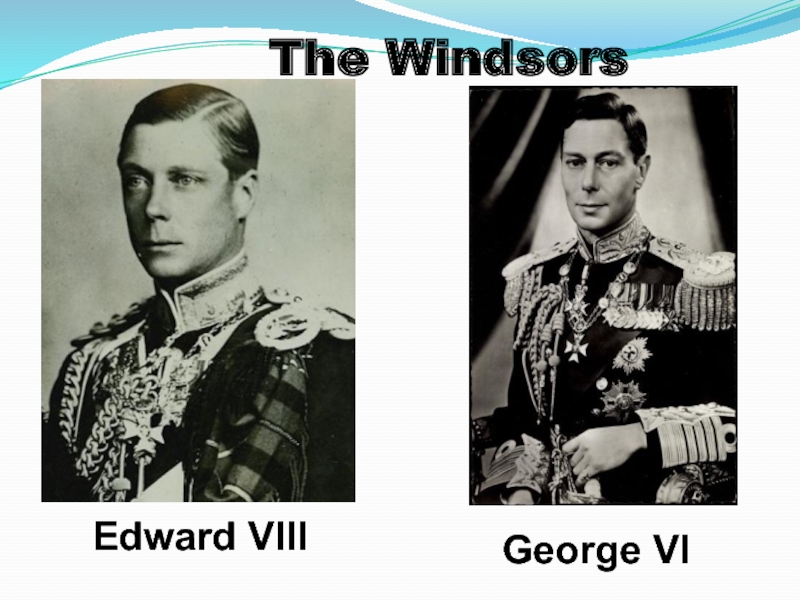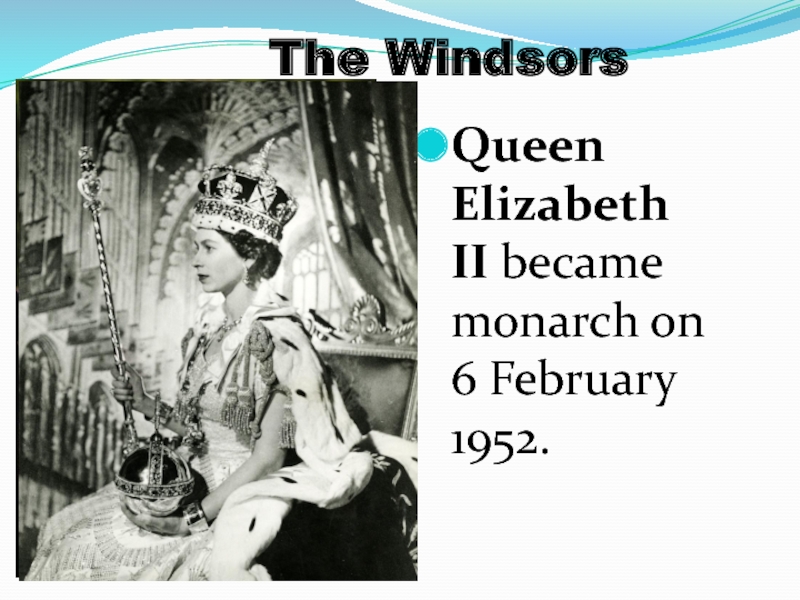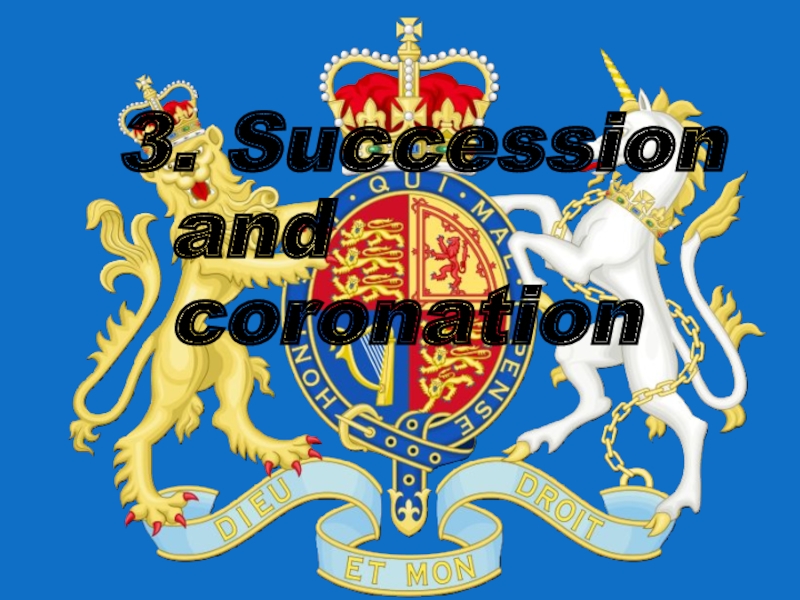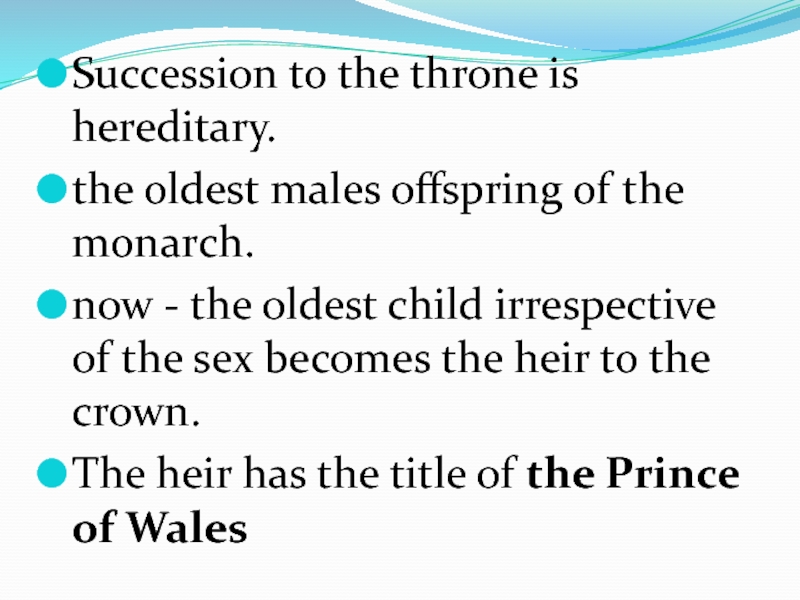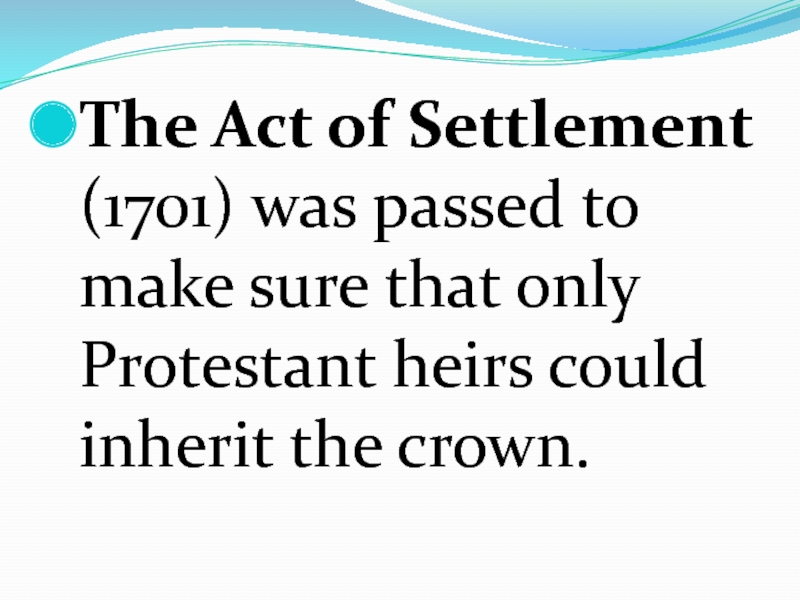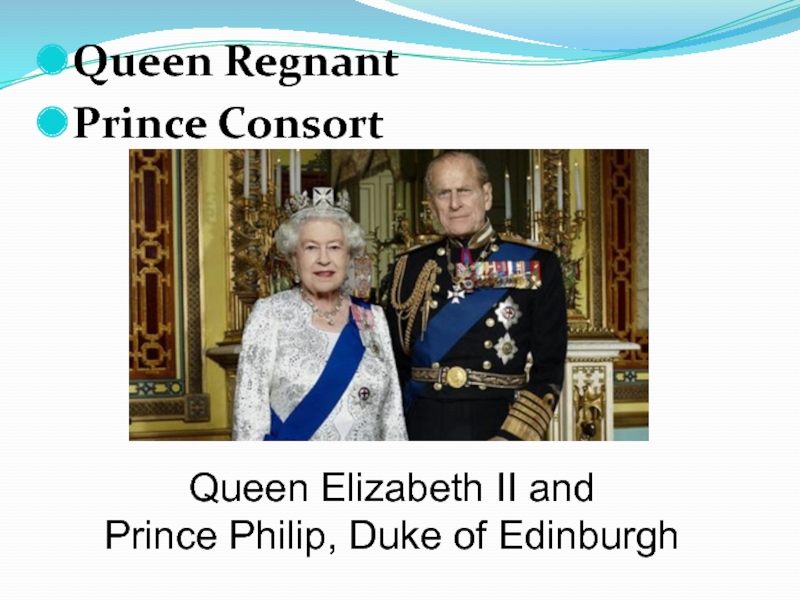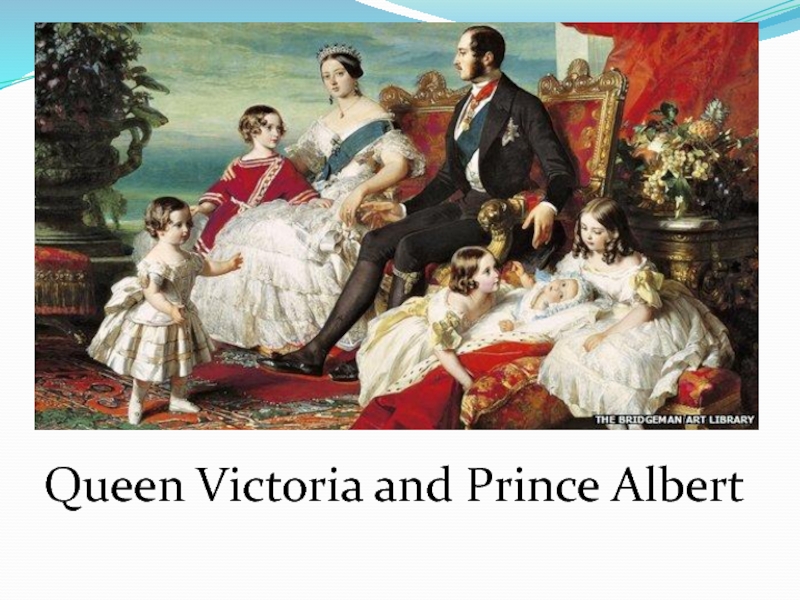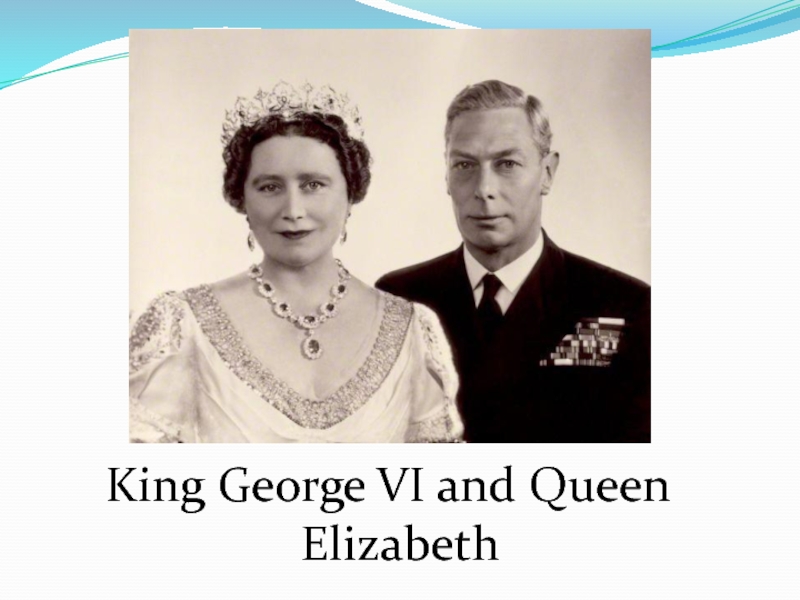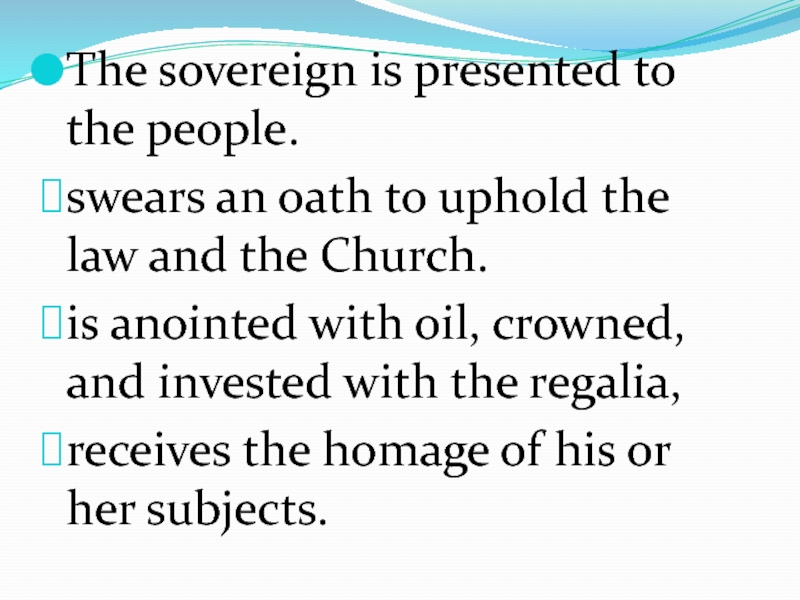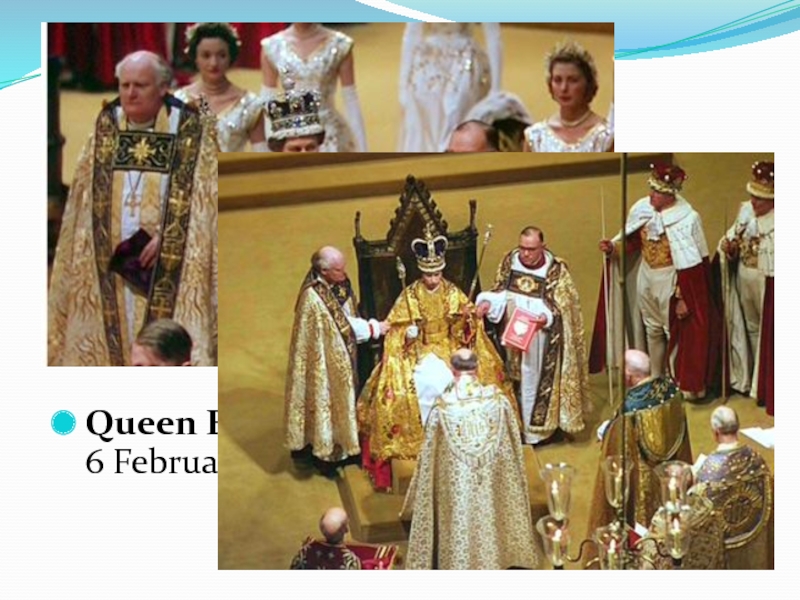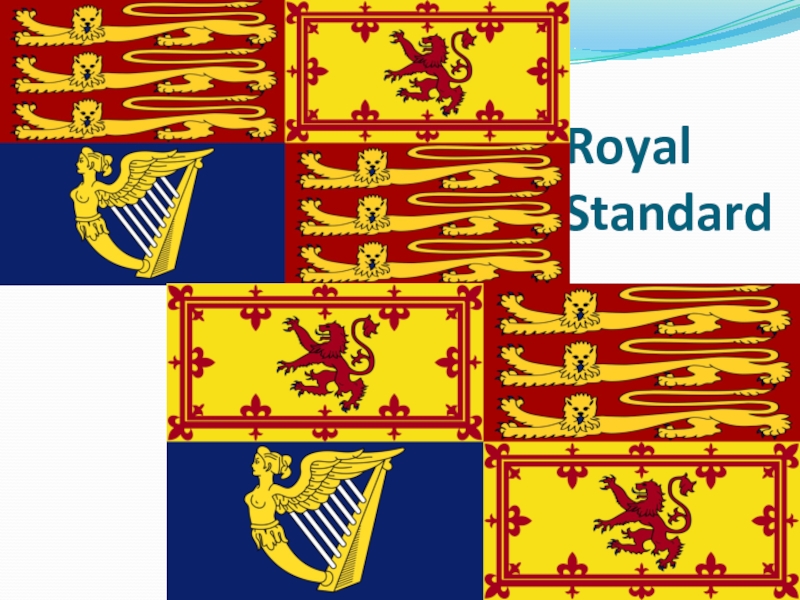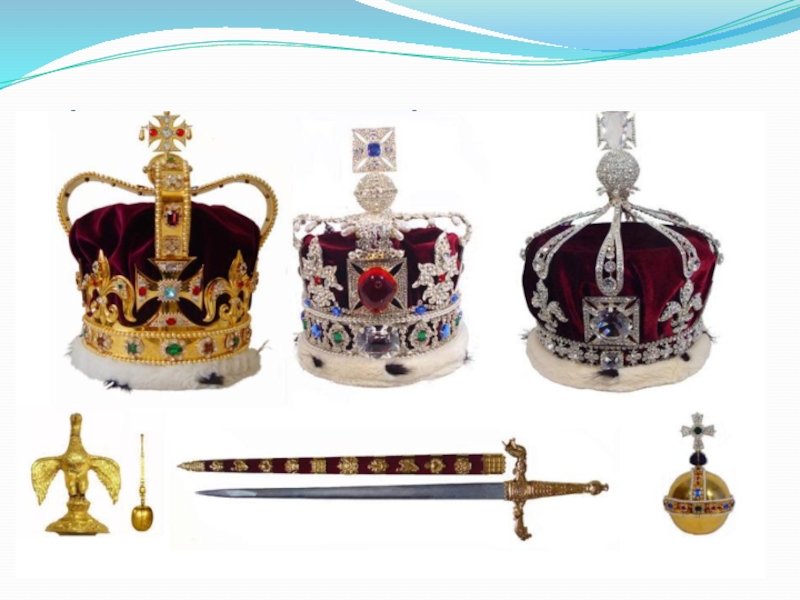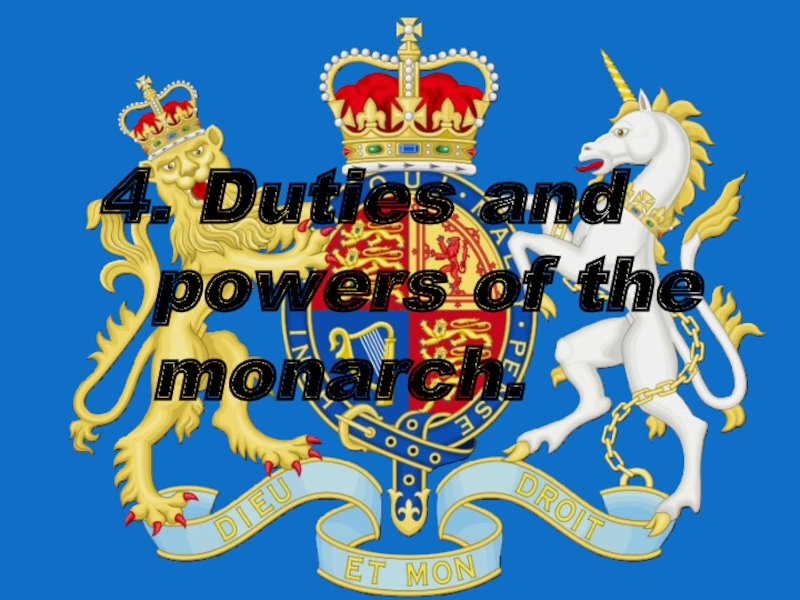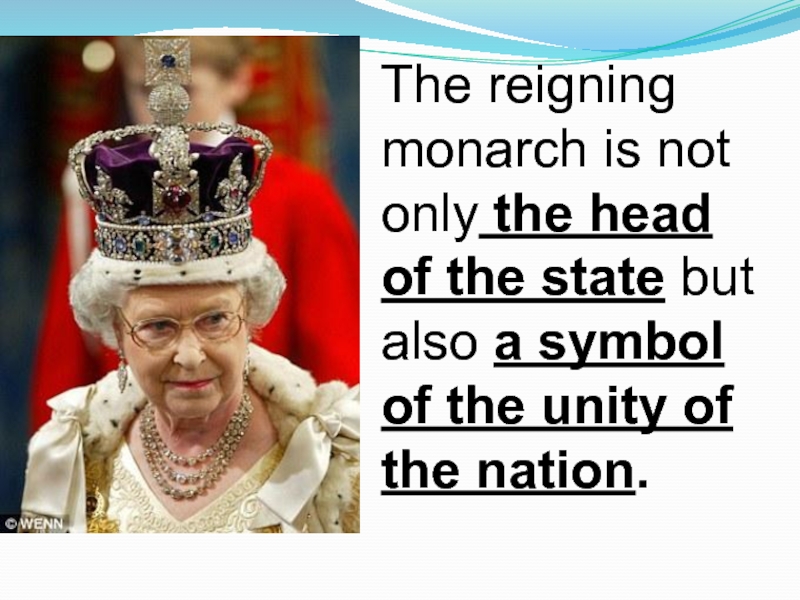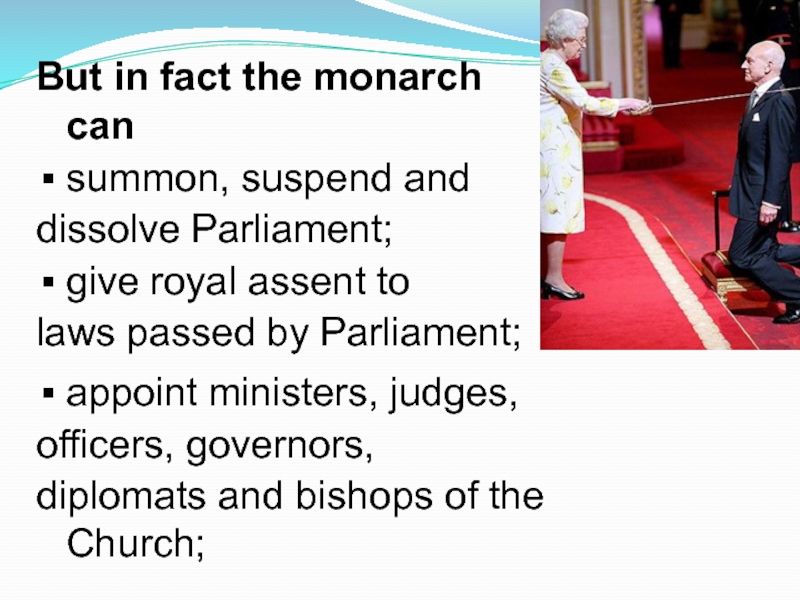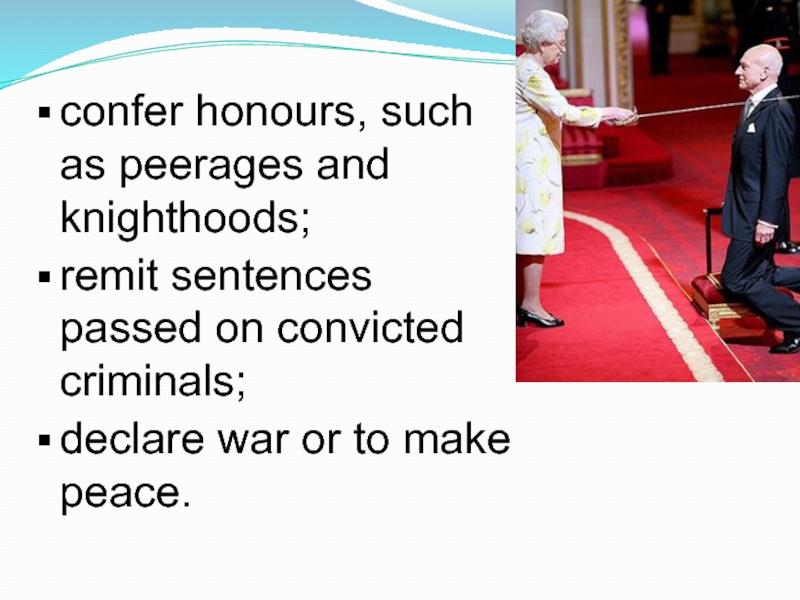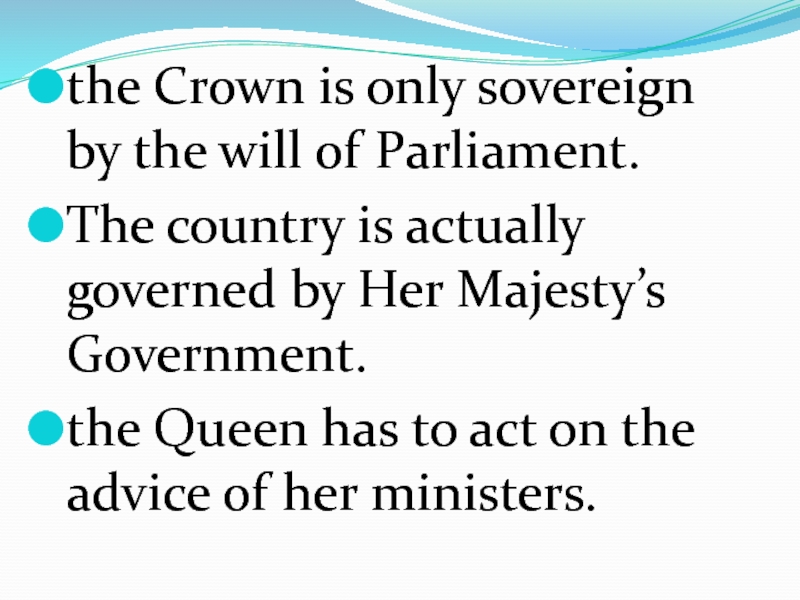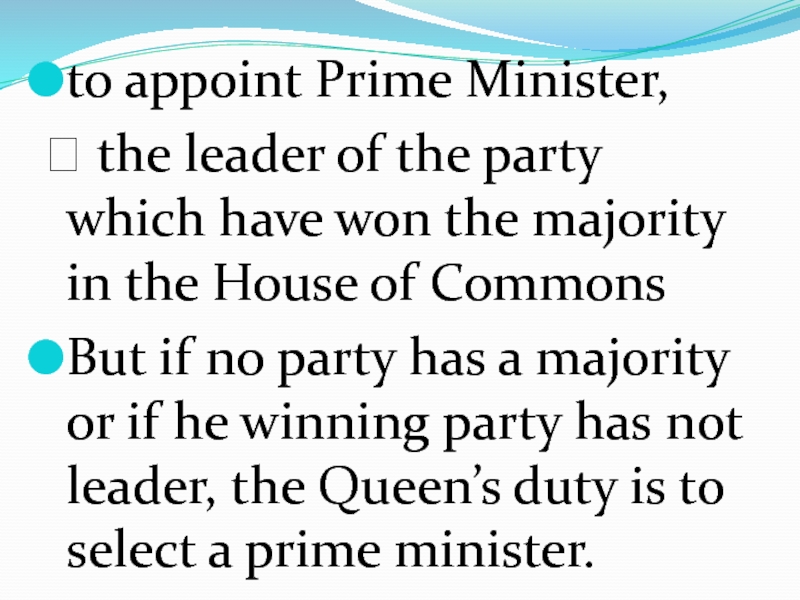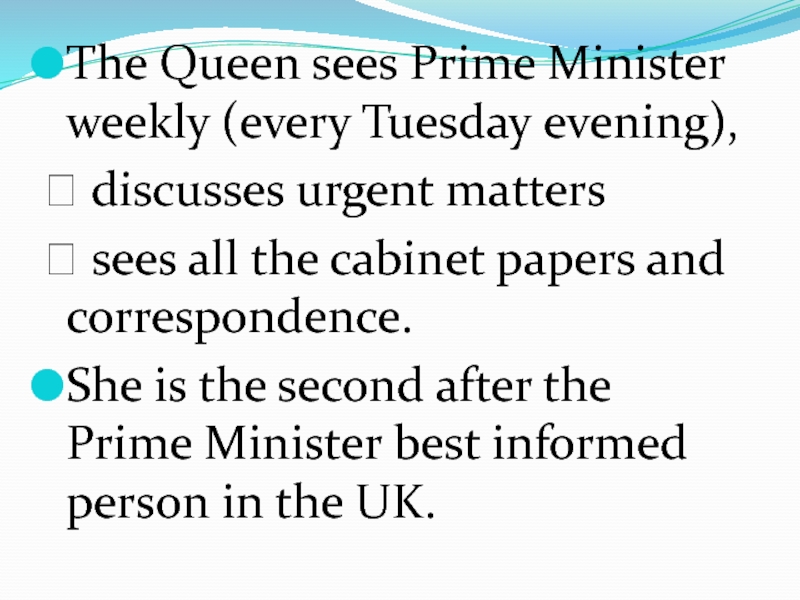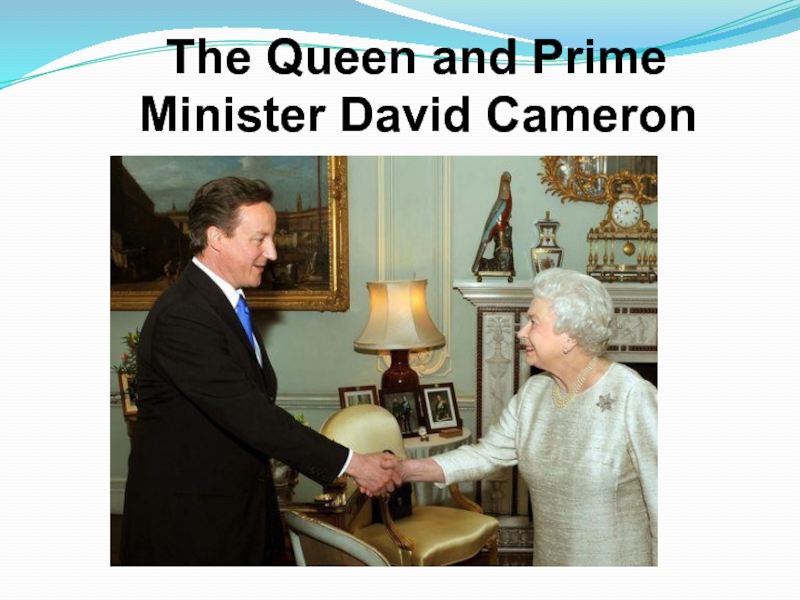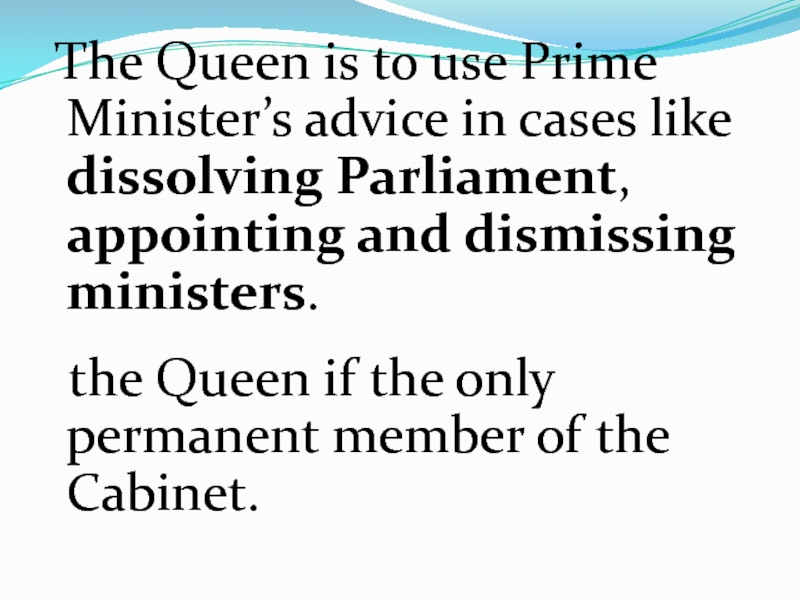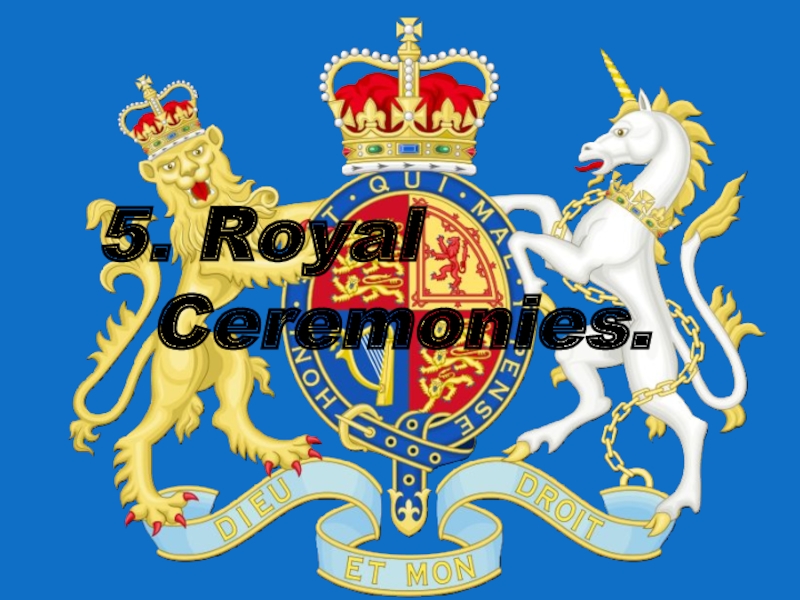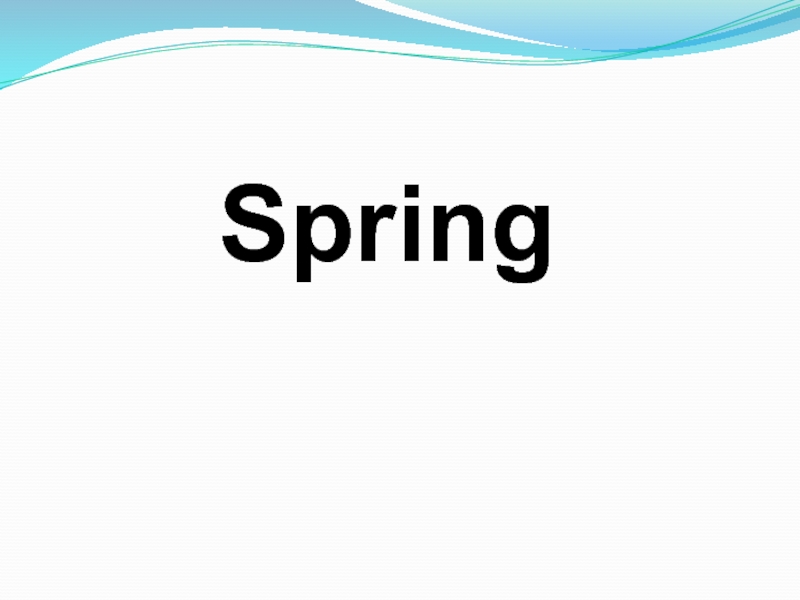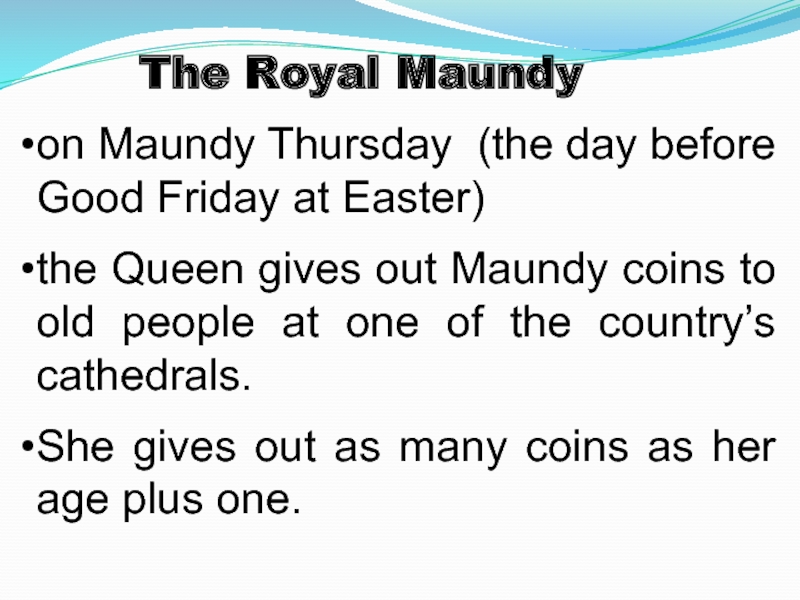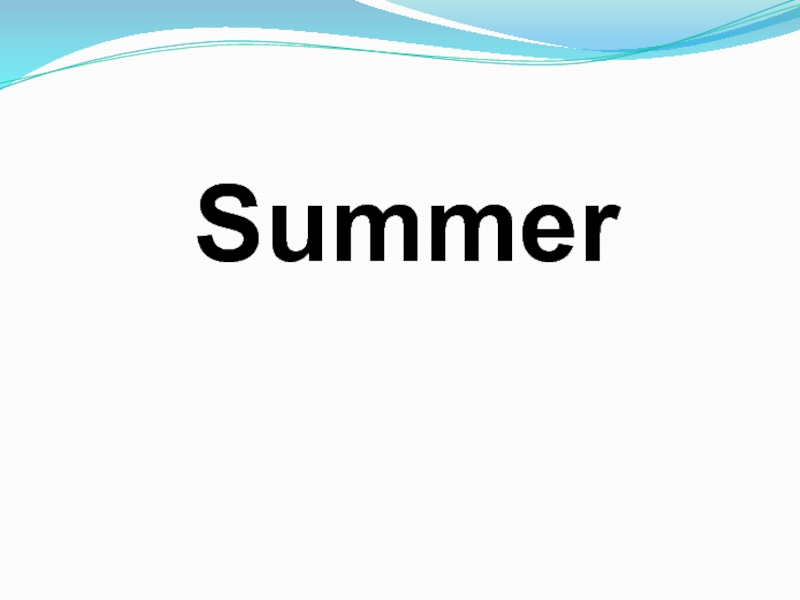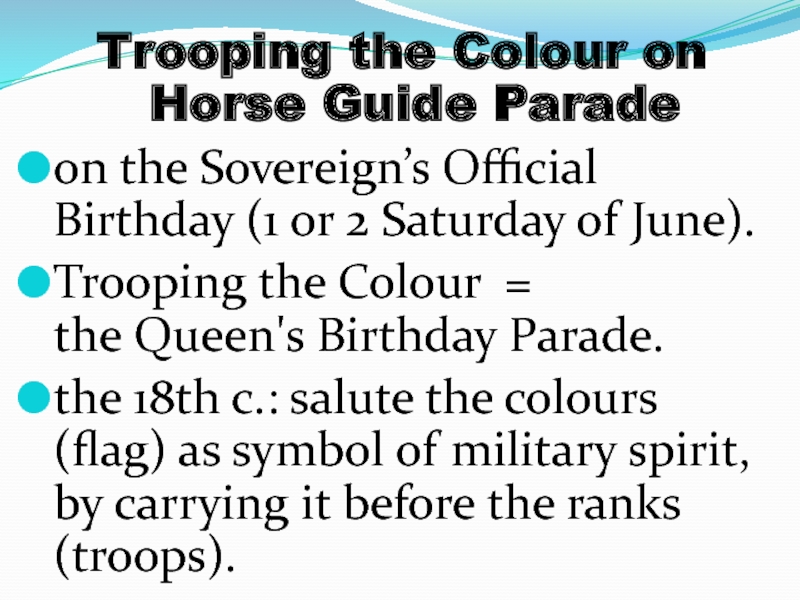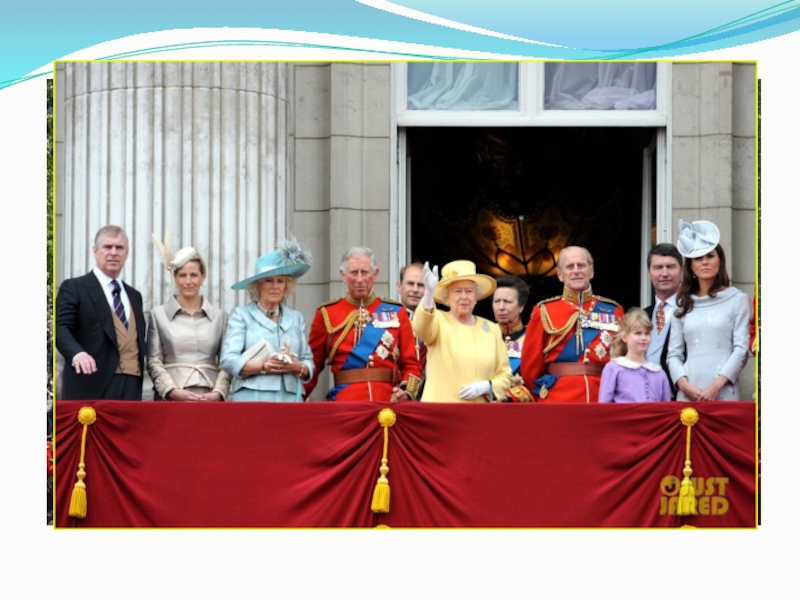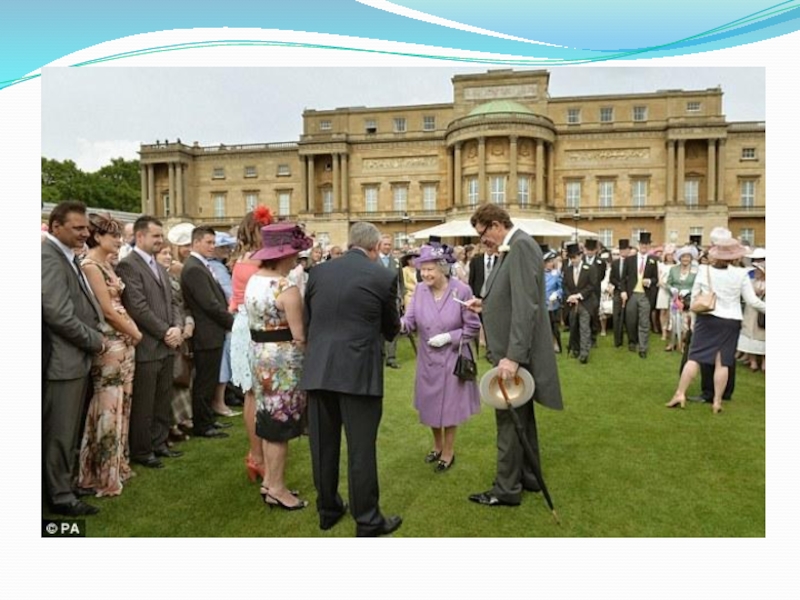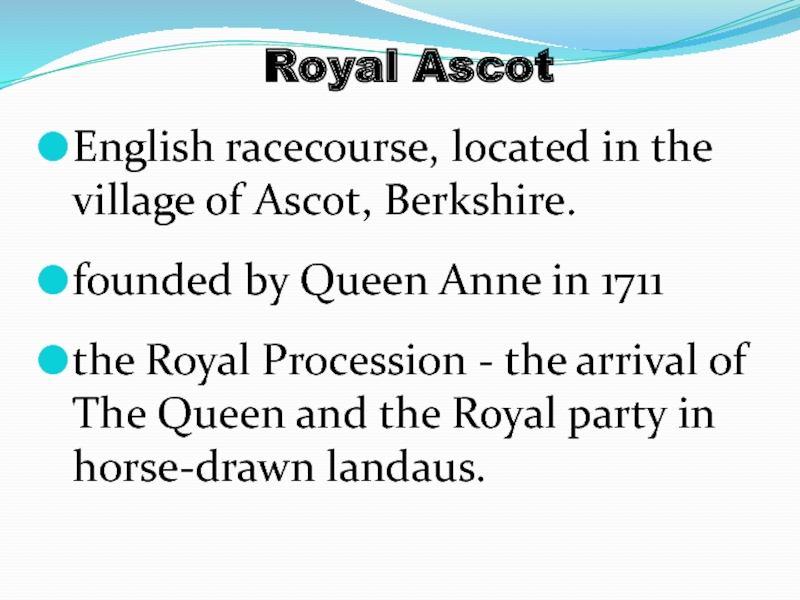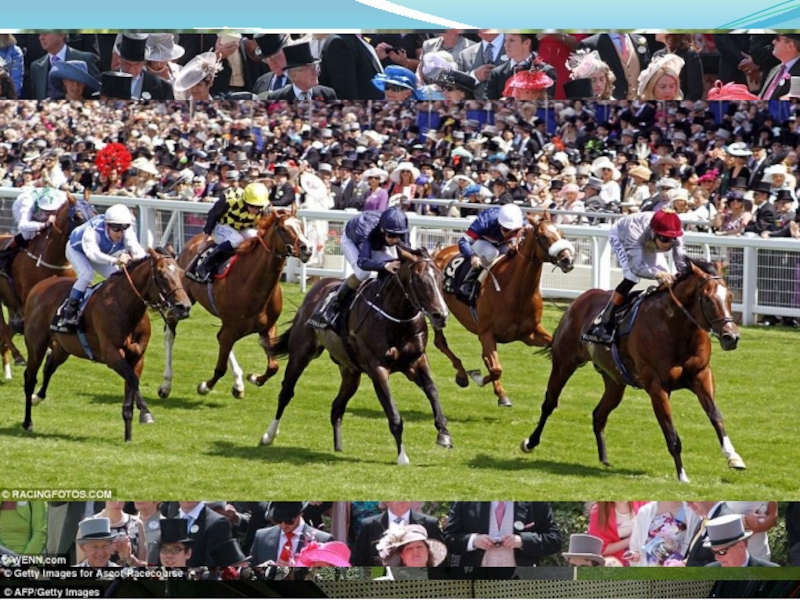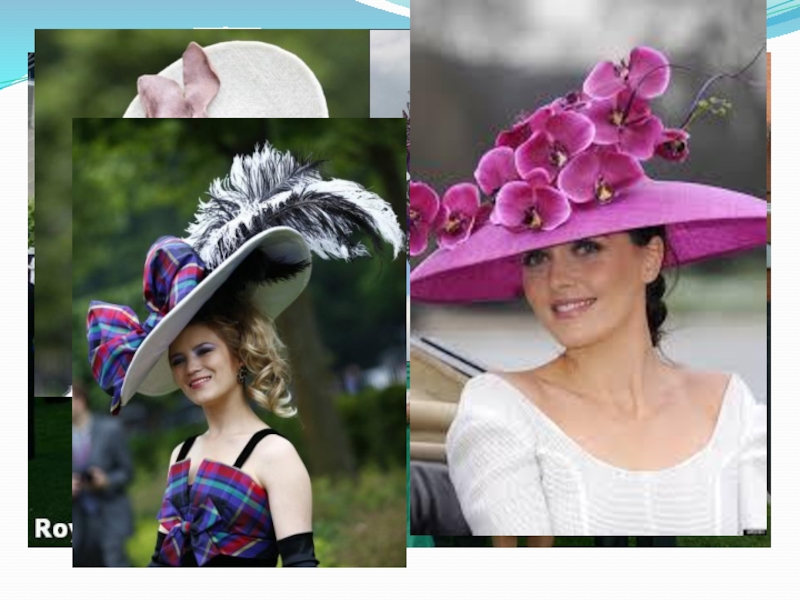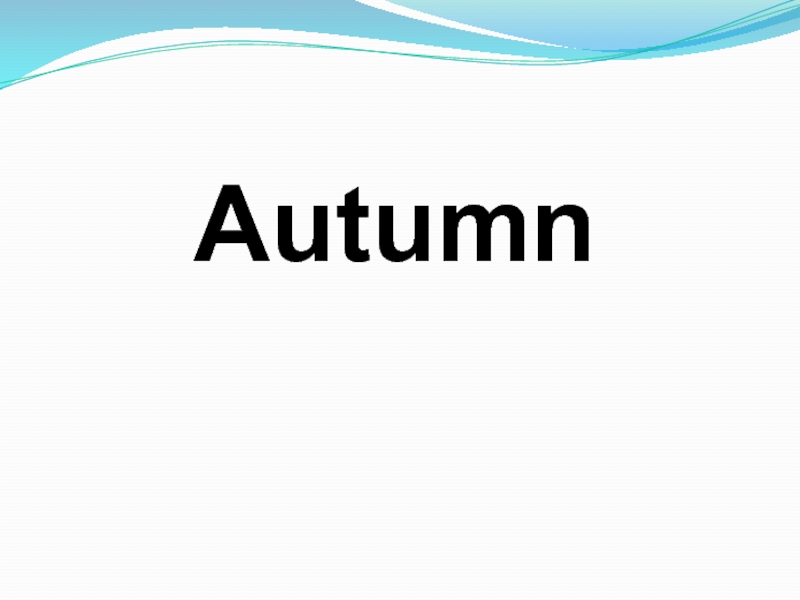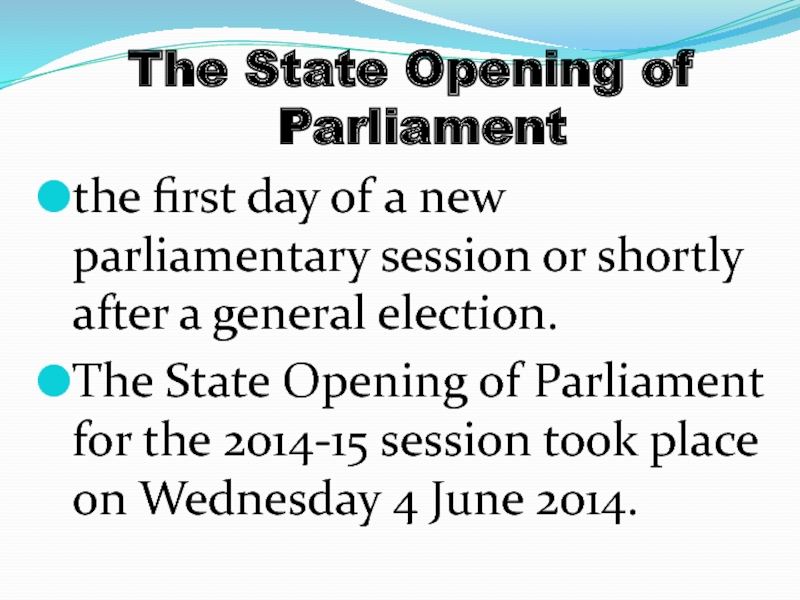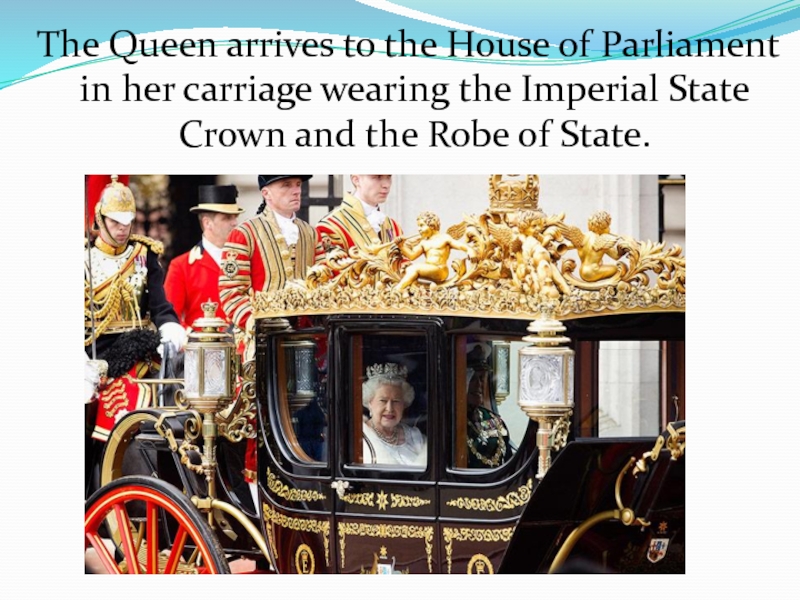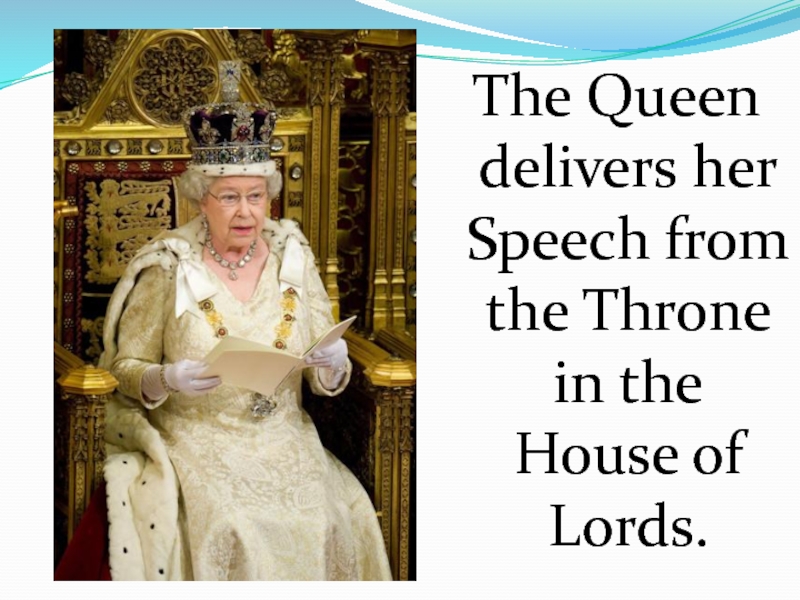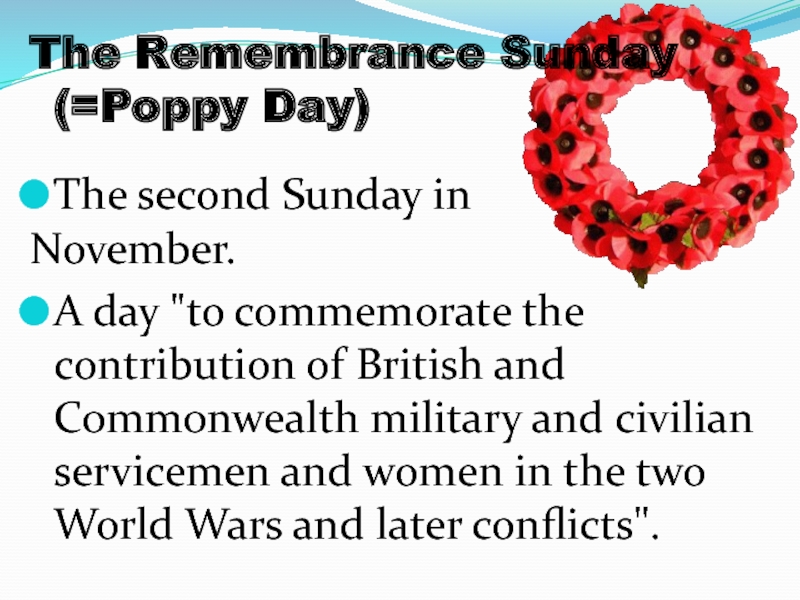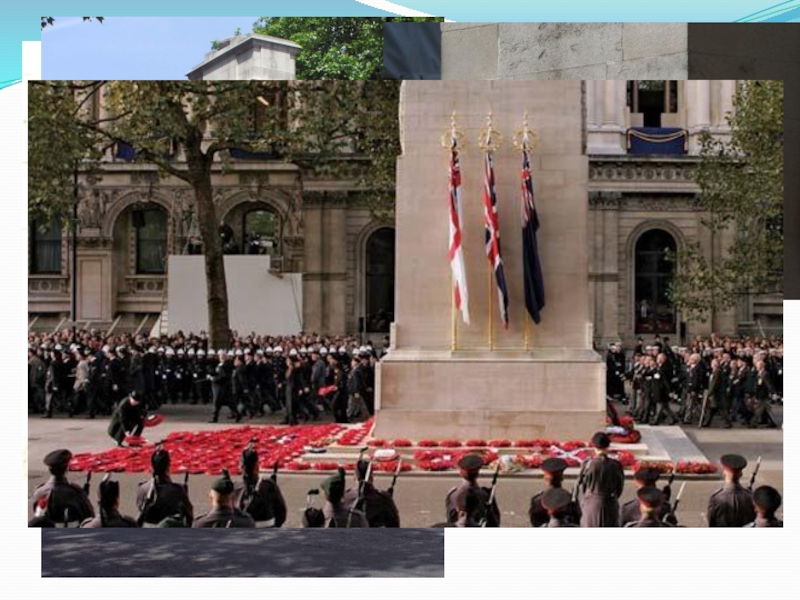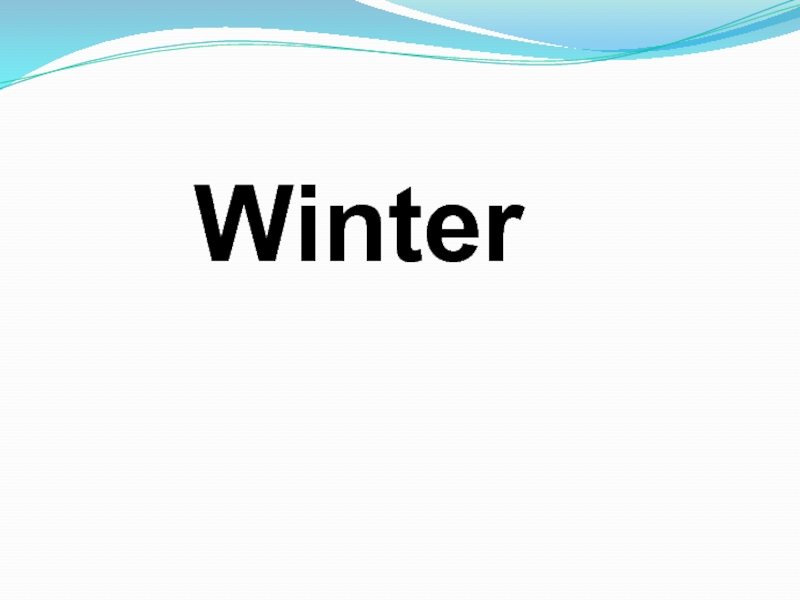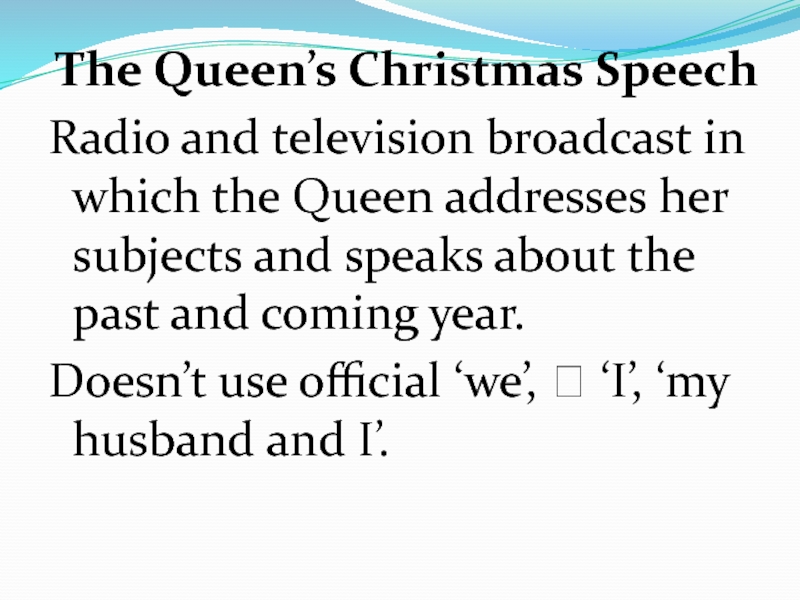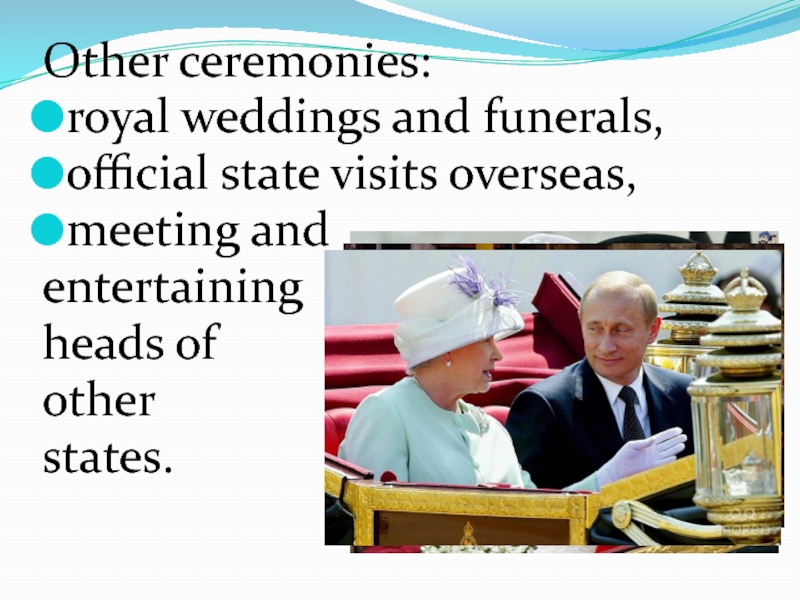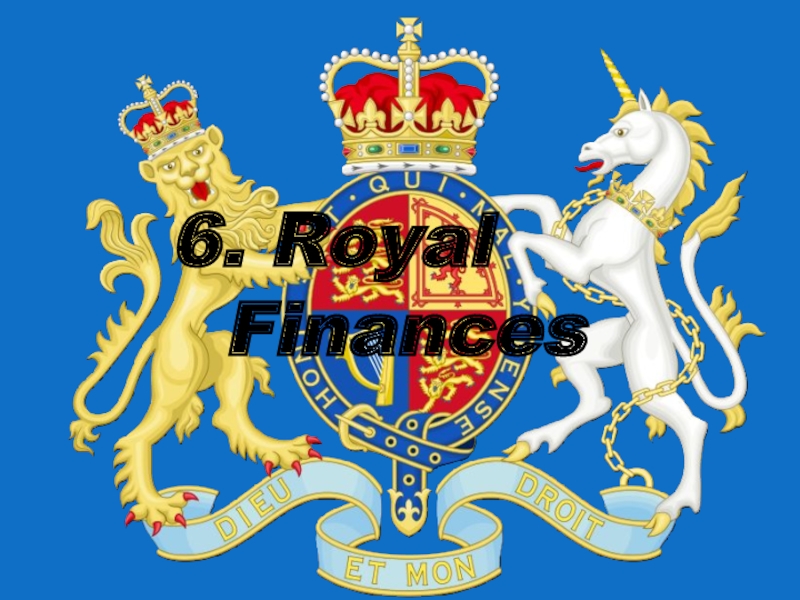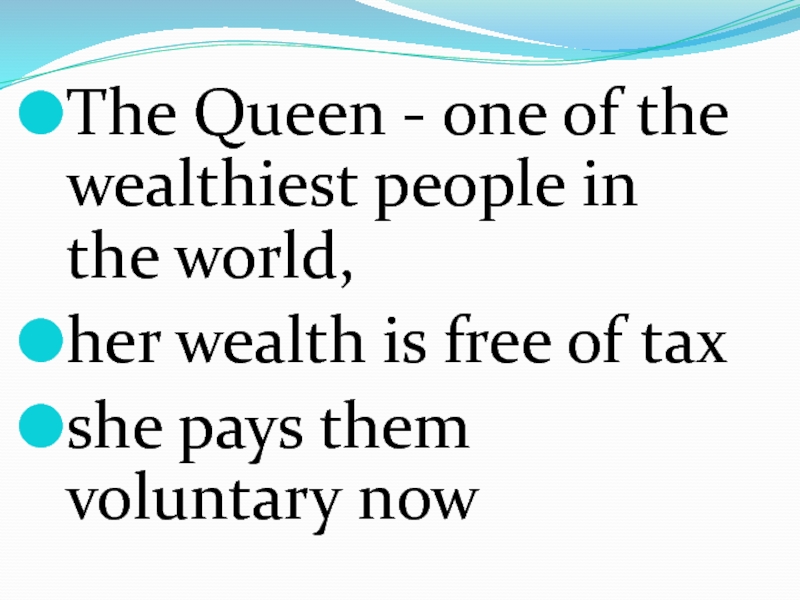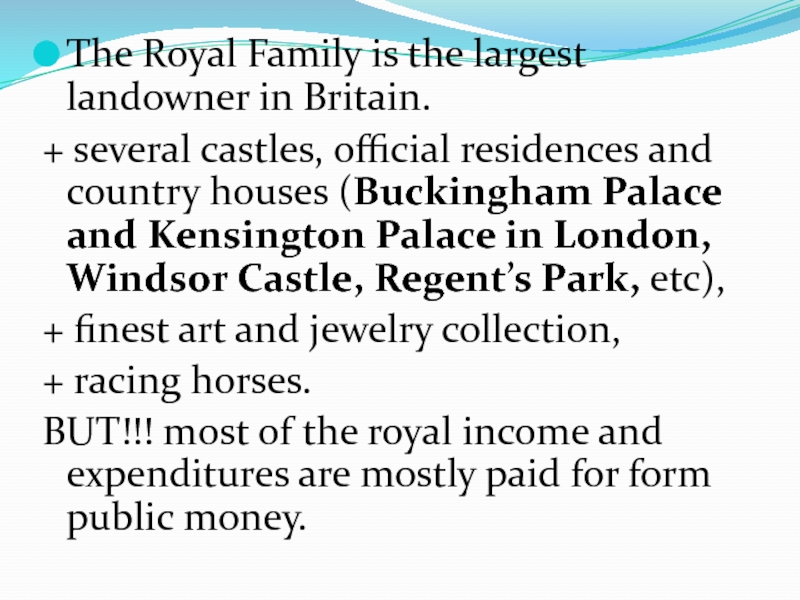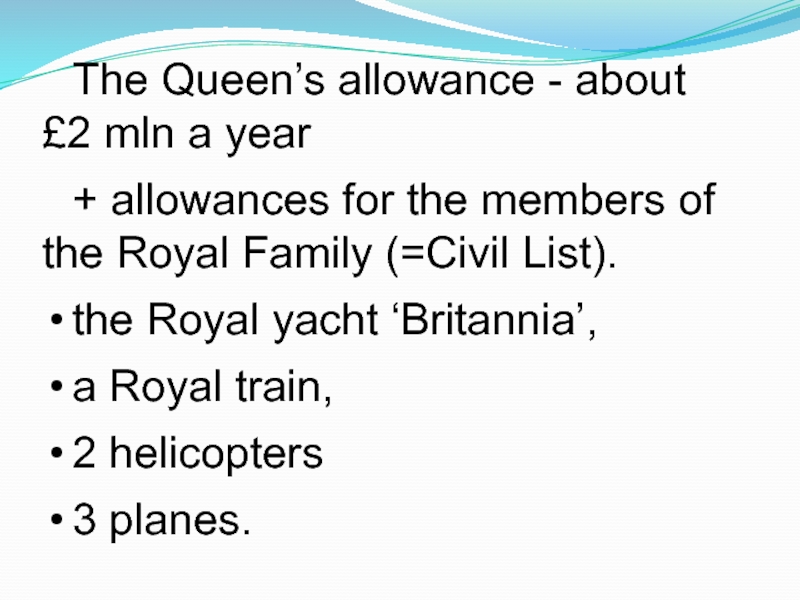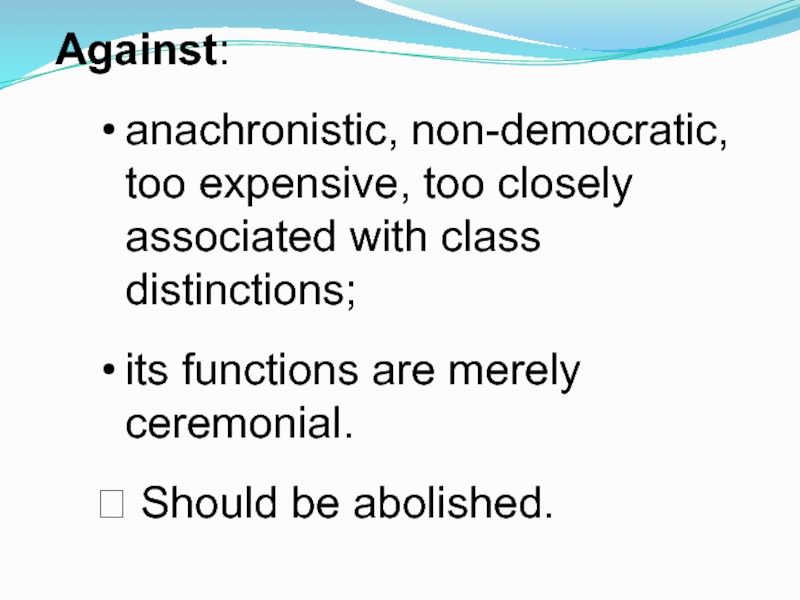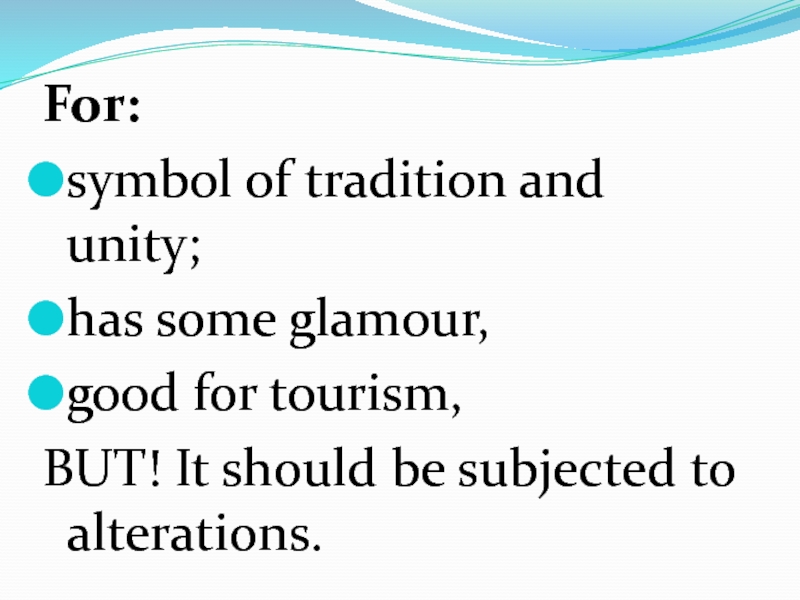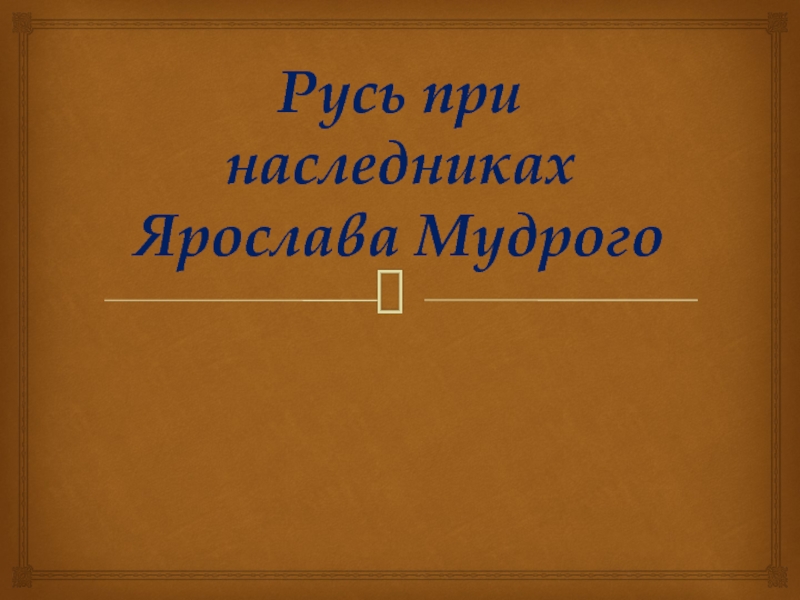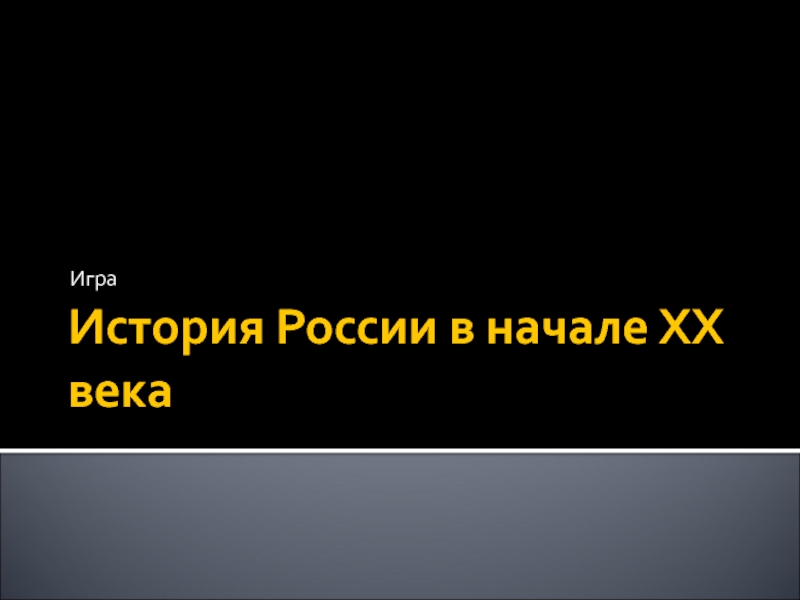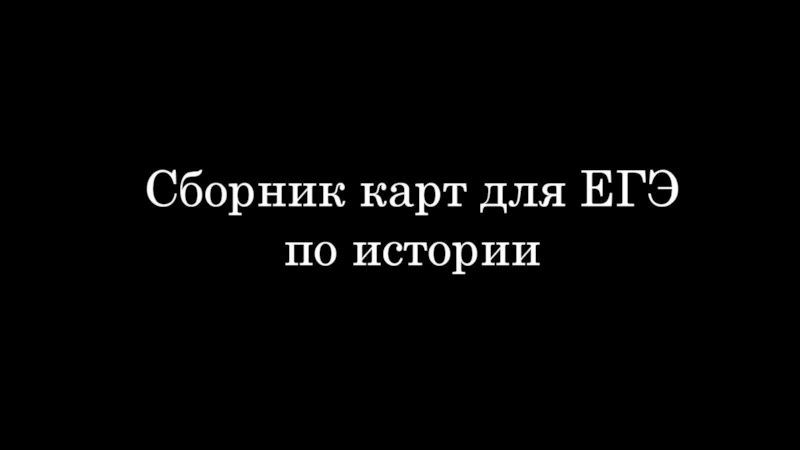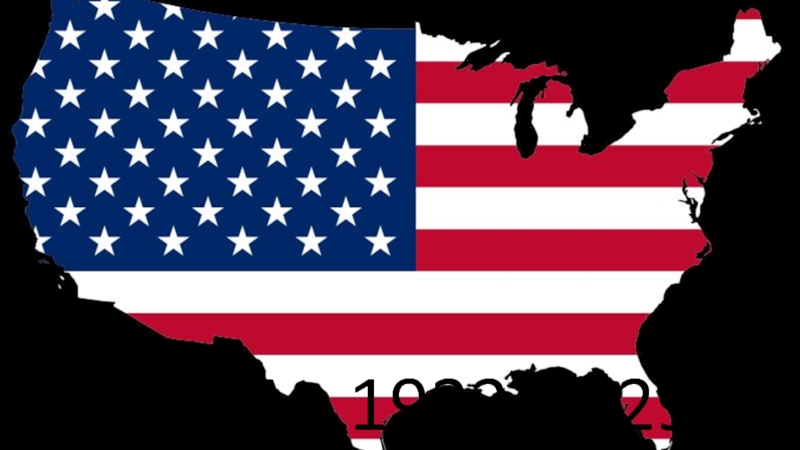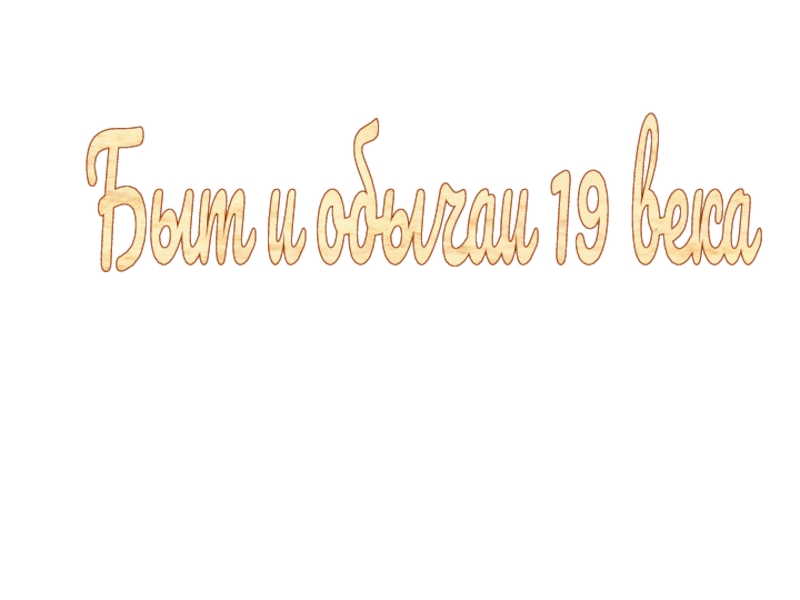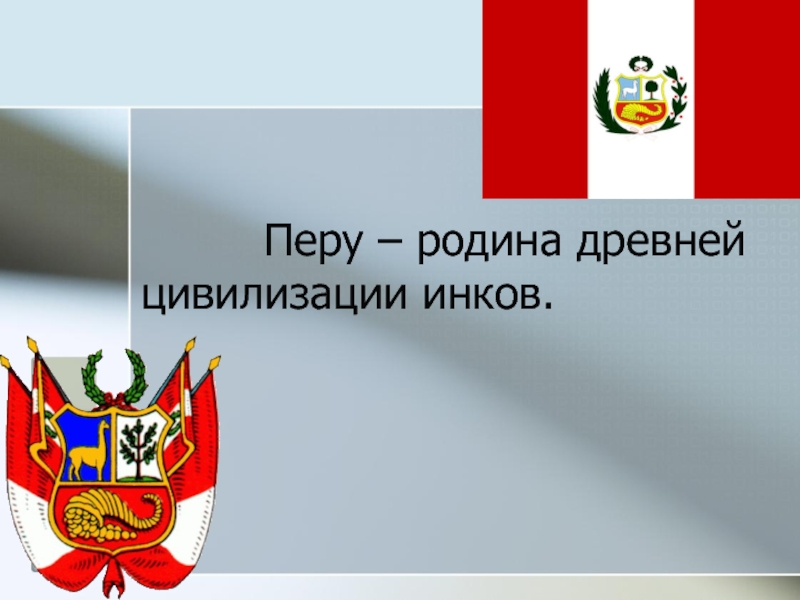- Главная
- Разное
- Дизайн
- Бизнес и предпринимательство
- Аналитика
- Образование
- Развлечения
- Красота и здоровье
- Финансы
- Государство
- Путешествия
- Спорт
- Недвижимость
- Армия
- Графика
- Культурология
- Еда и кулинария
- Лингвистика
- Английский язык
- Астрономия
- Алгебра
- Биология
- География
- Детские презентации
- Информатика
- История
- Литература
- Маркетинг
- Математика
- Медицина
- Менеджмент
- Музыка
- МХК
- Немецкий язык
- ОБЖ
- Обществознание
- Окружающий мир
- Педагогика
- Русский язык
- Технология
- Физика
- Философия
- Химия
- Шаблоны, картинки для презентаций
- Экология
- Экономика
- Юриспруденция
British monarchy. (Lecture 3) презентация
Содержание
- 1. British monarchy. (Lecture 3)
- 2. PLAN British state system and its historical background British royal dynasties Succession and coronation.
- 3. Duties and powers of the monarch. Royal Ceremonies. Royal Finances.
- 4. British state system and its historical background .
- 5. the UNITED KINGDOM a democracy? a constitutional monarchy?
- 6. The people are subjects of the Crown,
- 7. British sovereignty consists in 3 elements:
- 8. The monarchy is the oldest institution.
- 9. 1215 – 1st step toward representative government,
- 10. Clause 8 No widow is to be
- 11. Clause 39 No free man is to
- 12. 1215 King John signed the Magna Carta
- 13. The charter required King John to proclaim
- 14. Magna Carta made the king consult a
- 15. Initially, parliaments were mostly summoned when the
- 16. One of the major instruments of parliamentary
- 17. 17th century King James I King Charles I
- 18. King Charles I dissolved and recalled Parliament several times. King Charles I
- 19. Parliament passed an Act: impossible to dissolve
- 20. Civil War 1642–1651: Royal army vs Parliamentary
- 21. 1649 The parliament abolished the institution of monarchy England was proclaimed a Commonwealth.
- 22. 1653 Oliver Cromwell became
- 23. A political crisis. ? the restoration of the
- 24. Charles II died in 1685 and he
- 25. William invaded England, James fled the country.
- 26. 1689, the English Bill of
- 27. 2. British Royal Dynasties.
- 28. No Plan Like Yours To Study HISTORY
- 29. the 8th and 9th centuries - Offa
- 30. 1485 Henry Tudor became
- 31. the Tudors Henry VIII Edward VI
- 32. the Tudors Mary I (Bloody) Elizabeth I
- 33. the death of the 'Virgin Queen' in
- 34. The Stuarts James I Charles I
- 35. The Stuarts Charles II James II
- 36. The Stuarts William II Mary II
- 37. The Stuarts Anne the Act of Settlement
- 38. The Hanovers George I George II George III George IV
- 39. The Hanovers Married to Prince Albert,
- 40. The Saxe-Coburg-Gotha Edward VII
- 41. The Windsors George V Николай II
- 42. The Windsors Edward VIII George VI
- 43. Queen Elizabeth II became monarch on 6 February 1952. The Windsors
- 44. 3. Succession and coronation
- 45. Elizabeth the Second, by the Grace of
- 46. Succession to the throne is hereditary.
- 47. The Act of Settlement (1701) was passed
- 48. Queen Regnant Prince Consort Queen
- 49. Queen Victoria and Prince Albert
- 50. King George VI and Queen Elizabeth
- 51. The coronation service is conducted by the
- 52. The sovereign is presented to the people.
- 53. Queen Elizabeth II became monarch on 6 February 1952.
- 55. Royal Standard
- 56. The Crown Jewels
- 57. The Imperial State Crown The Orb Sceptre
- 58. 4. Duties and powers of the monarch.
- 59. The reigning monarch is not only
- 60. In
- 61. But in fact the monarch can summon,
- 62. confer honours, such as peerages and knighthoods;
- 63. the Crown is only sovereign by the
- 64. to appoint Prime Minister, ? the
- 65. The Queen sees Prime Minister weekly (every
- 66. The Queen and Prime Minister David Cameron
- 67. The Queen is to use Prime
- 68. 5. Royal Ceremonies.
- 69. Spring
- 70. The Royal Maundy
- 71. Summer
- 72. Trooping the Colour on Horse Guide Parade
- 74. Royal Garden Parties 3 – at
- 76. Royal Ascot English racecourse, located in
- 79. Autumn
- 80. The State Opening of Parliament the first
- 81. The Queen arrives to the House of
- 82. The Queen delivers her Speech from the Throne in the House of Lords.
- 83. The Remembrance Sunday (=Poppy Day) The
- 85. Winter
- 86. The Queen’s Christmas Speech Radio and television
- 87. Other ceremonies: royal weddings and funerals,
- 88. Charity The members of the Royal
- 89. 6. Royal Finances
- 90. The Queen - one of the wealthiest
- 91. The Royal Family is the largest landowner
- 92. The Queen’s allowance - about £2 mln
- 93. Against: anachronistic, non-democratic, too expensive, too closely
- 94. For: symbol of tradition and unity;
Слайд 2PLAN
British state system and its historical background
British royal dynasties
Succession and coronation.
Слайд 6The people are subjects of the Crown, accepting the Queen as
But the Queen is not a true sovereign – she receives her authority from Parliament and her power is limited.
She reigns, but does not rule.
Слайд 7British sovereignty consists in 3 elements:
the Crown,
Parliament’s
the House of Lords
the House of Commons.
Government
Слайд 8The monarchy is the oldest institution.
the 9th century - Saxon
Слайд 91215 – 1st step toward representative government,
a system
Слайд 10Clause 8 No widow is to be forced to marry while she
Magna Carta (Great Charter)
Слайд 11Clause 39 No free man is to be arrested, or imprisoned except
Clause 40 We will not sell, or deny, or delay right or justice to anyone.
Magna Carta (Great Charter)
Слайд 121215 King John signed the Magna Carta (Great Charter) –
the
that limited king’s
power.
Слайд 13The charter required King John to proclaim certain liberties to his
e.g., no "freeman" (=non-serf) could be punished
except through
the law of the land.
This right still exists.
Слайд 14Magna Carta made the king consult a group of representatives called
? the Parliament of England.
Слайд 15Initially, parliaments were mostly summoned when the king needed to raise
This became an important privilege of the Parliament.
Слайд 16One of the major instruments of parliamentary control over the king:
?the
money (imposing new
taxes) if he needed it.
Слайд 19Parliament passed an Act:
impossible to dissolve Parliament without its consent;
ministers are
Слайд 20Civil War 1642–1651:
Royal army vs Parliamentary army
outcome of
the trial and execution of Charles I;
the exile of his family.
Слайд 211649
The parliament abolished the institution of monarchy
England was proclaimed a Commonwealth.
Слайд 22
1653 Oliver Cromwell
became ‘Lord
Protector of the Realm’
and England
proclaimed
the Protectorate.
1658 he died without a deserving successor.
Слайд 23A political crisis.
? the restoration of the monarchy:
Charles, the
? Charles II, King of England and Ireland on 23 April 1661.
Слайд 24Charles II died in 1685 and he was succeeded by his
Parliament invited William of Orange, a protestant, married to James’s daughter, Mary.
Слайд 25William invaded England, James fled the country.
Glorious Revolution: Mary and William
? as a compromise Parliament got its Bill of Rights (1689).
Слайд 26 1689, the English Bill of Rights
the Crown continued
Слайд 28No Plan Like Yours To Study HISTORY Wisely!
Norman (1066-),
Plantaganet (1154-),
Lancaster
York (1461-),
Tudor (1485-),
Stuart (1603-),
Hanover (1714-1901),
Windsor(1901/1917-present)
Слайд 29the 8th and 9th centuries - Offa and Alfred the Great
The Middle Ages - fierce contests for the Crown, ? the Hundred Years War.
advent of the Tudors
Слайд 33the death of the 'Virgin Queen' in 1603 brought about the
Слайд 39The Hanovers
Married to Prince Albert, son of Ernst, Duke of Saxe-Coburg
Queen Victoria
Слайд 45Elizabeth the Second, by the Grace of God, of the United
Слайд 46Succession to the throne is hereditary.
the oldest males offspring of
now - the oldest child irrespective of the sex becomes the heir to the crown.
The heir has the title of the Prince of Wales
Слайд 47The Act of Settlement (1701) was passed to make sure that
Слайд 51The coronation service is conducted by the senior priest in the
held at Westminster Abbey
in the presence of the representatives of Parliament, Prime Minister and leading citizens.
Слайд 52The sovereign is presented to the people.
swears an oath to
is anointed with oil, crowned, and invested with the regalia,
receives the homage of his or her subjects.
Слайд 59 The reigning monarch is not only the head of the
Слайд 60
In law the monarch is
head of the executive and of
head of the Church of England;
commander-in chief of the armed forces.
Слайд 61But in fact the monarch can
summon, suspend and
dissolve Parliament;
give royal
laws passed by Parliament;
appoint ministers, judges,
officers, governors,
diplomats and bishops of the Church;
Слайд 62confer honours, such as peerages and knighthoods;
remit sentences passed on convicted
declare war or to make peace.
Слайд 63the Crown is only sovereign by the will of Parliament.
The
the Queen has to act on the advice of her ministers.
Слайд 64to appoint Prime Minister,
? the leader of the party which
But if no party has a majority or if he winning party has not leader, the Queen’s duty is to select a prime minister.
Слайд 65The Queen sees Prime Minister weekly (every Tuesday evening),
? discusses
? sees all the cabinet papers and correspondence.
She is the second after the Prime Minister best informed person in the UK.
Слайд 67 The Queen is to use Prime Minister’s advice in cases
the Queen if the only permanent member of the Cabinet.
Слайд 70 The Royal Maundy
on Maundy Thursday (the
the Queen gives out Maundy coins to old people at one of the country’s cathedrals.
She gives out as many coins as her age plus one.
Слайд 72Trooping the Colour on Horse Guide Parade
on the Sovereign’s Official
Trooping the Colour = the Queen's Birthday Parade.
the 18th c.: salute the colours (flag) as symbol of military spirit, by carrying it before the ranks (troops).
Слайд 74Royal Garden Parties
3 – at Buckingham palace,
1 – at
the Queen distributes the awards granted to both civilians and the military.
Слайд 76Royal Ascot
English racecourse, located in the village of Ascot, Berkshire.
founded by Queen Anne in 1711
the Royal Procession - the arrival of The Queen and the Royal party in horse-drawn landaus.
Слайд 80The State Opening of Parliament
the first day of a new parliamentary
The State Opening of Parliament for the 2014-15 session took place on Wednesday 4 June 2014.
Слайд 81The Queen arrives to the House of Parliament in her carriage
Слайд 83The Remembrance Sunday (=Poppy Day)
The second Sunday in
November.
A day
Слайд 86The Queen’s Christmas Speech
Radio and television broadcast in which the Queen
Doesn’t use official ‘we’, ? ‘I’, ‘my husband and I’.
Слайд 87Other ceremonies:
royal weddings and funerals,
official state visits overseas,
meeting
entertaining
heads of
other
states.
Слайд 88Charity
The members of the Royal Family are involved in the
Слайд 90The Queen - one of the wealthiest people in the world,
her wealth is free of tax
she pays them voluntary now
Слайд 91The Royal Family is the largest landowner in Britain.
+ several
+ finest art and jewelry collection,
+ racing horses.
BUT!!! most of the royal income and expenditures are mostly paid for form public money.
Слайд 92The Queen’s allowance - about £2 mln a year
+ allowances
the Royal yacht ‘Britannia’,
a Royal train,
2 helicopters
3 planes.
Слайд 93Against:
anachronistic, non-democratic, too expensive, too closely associated with class distinctions;
its functions
? Should be abolished.
